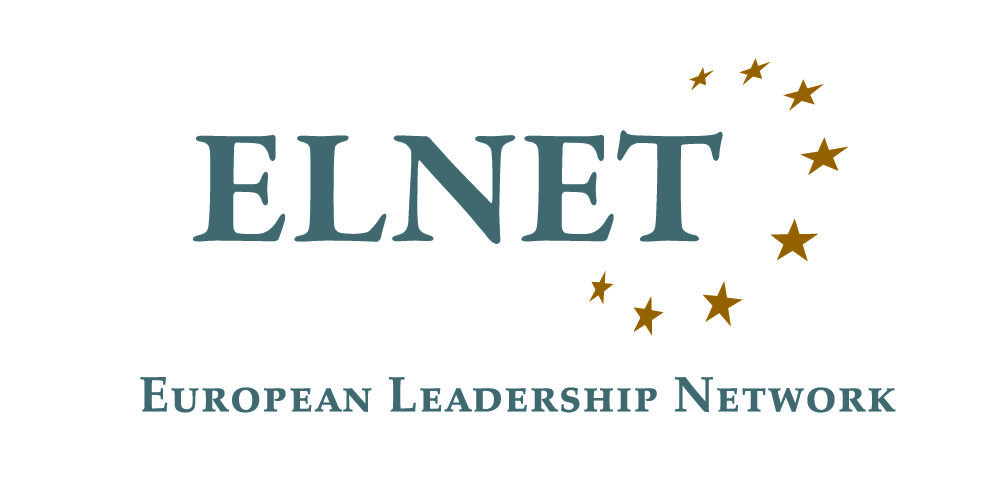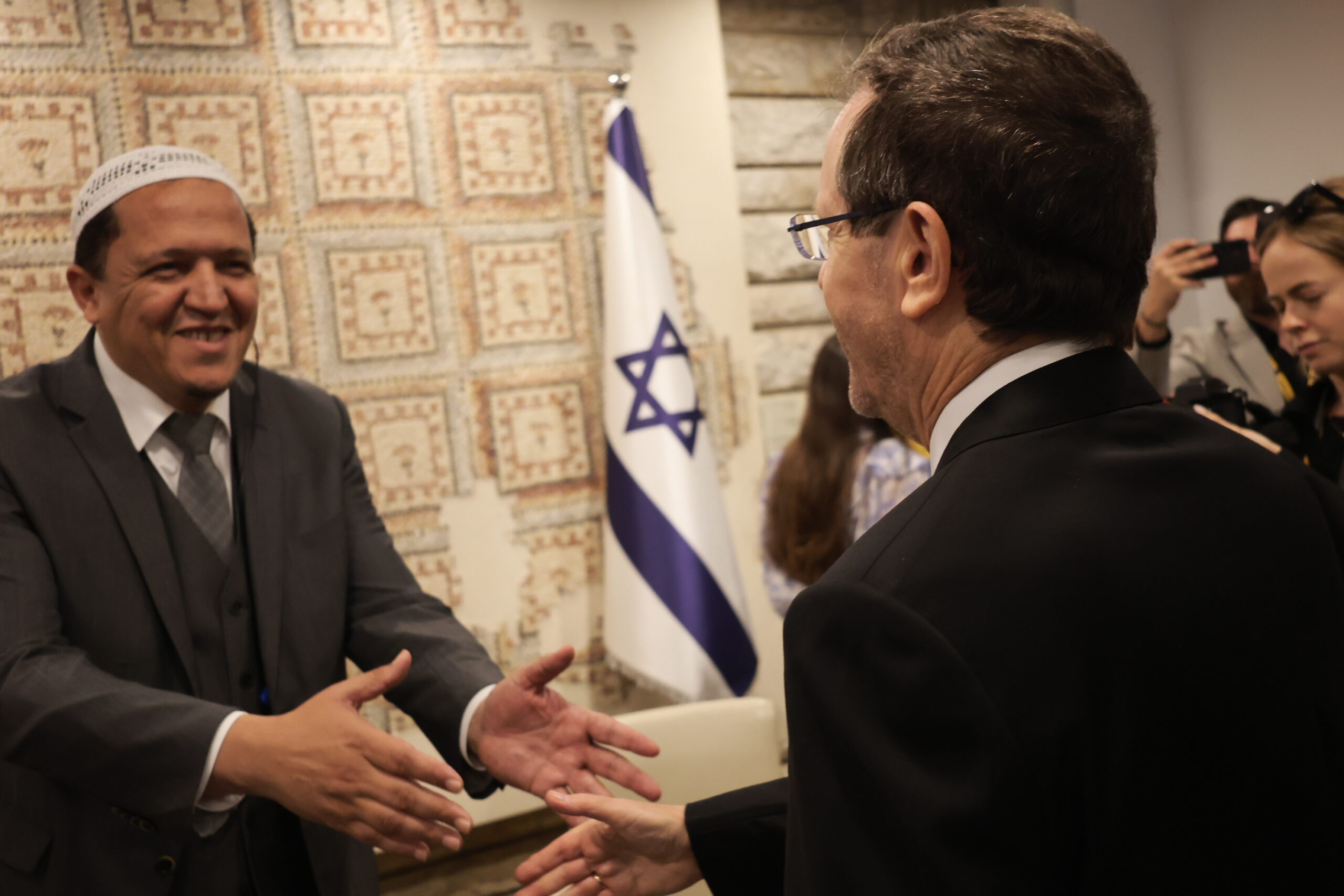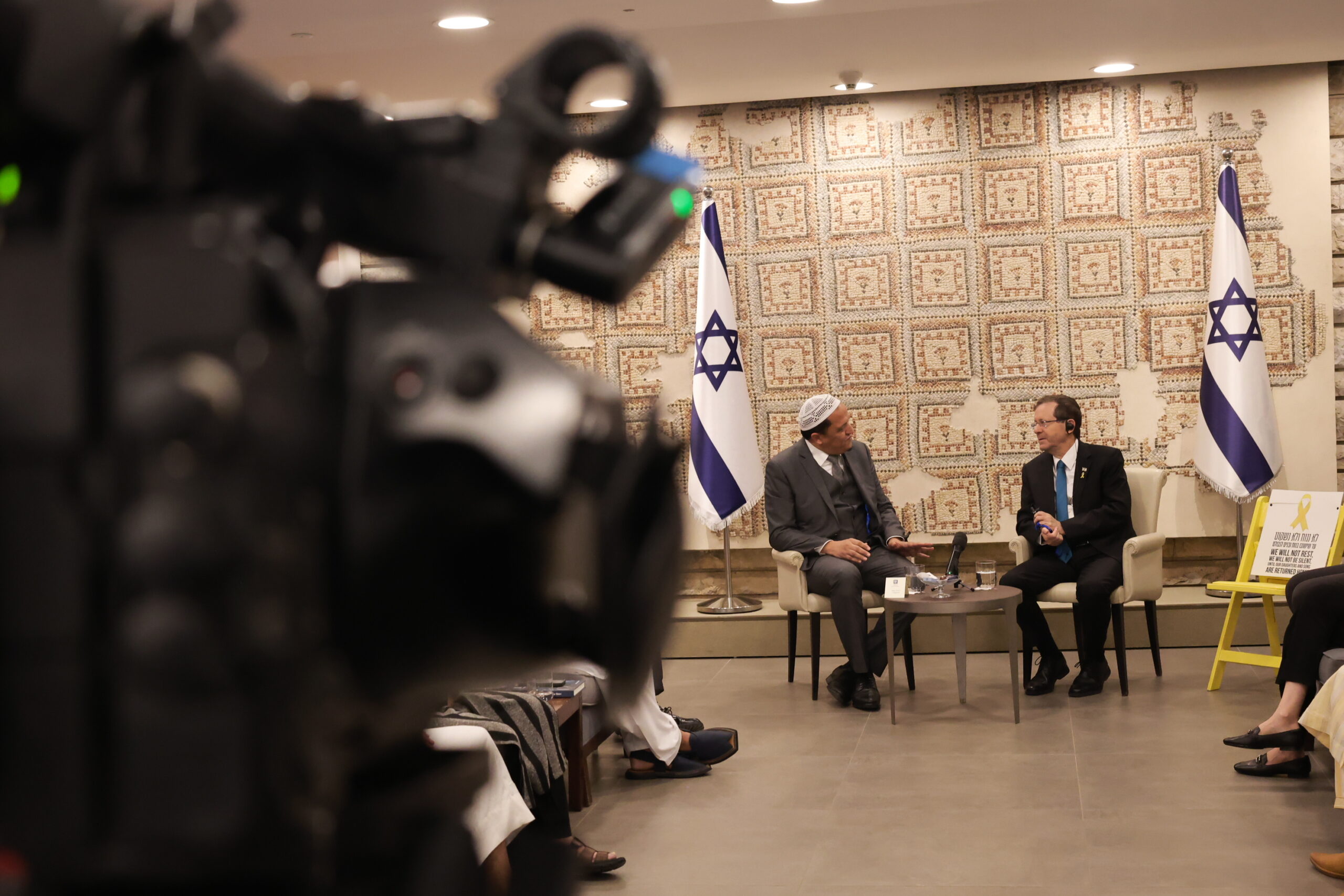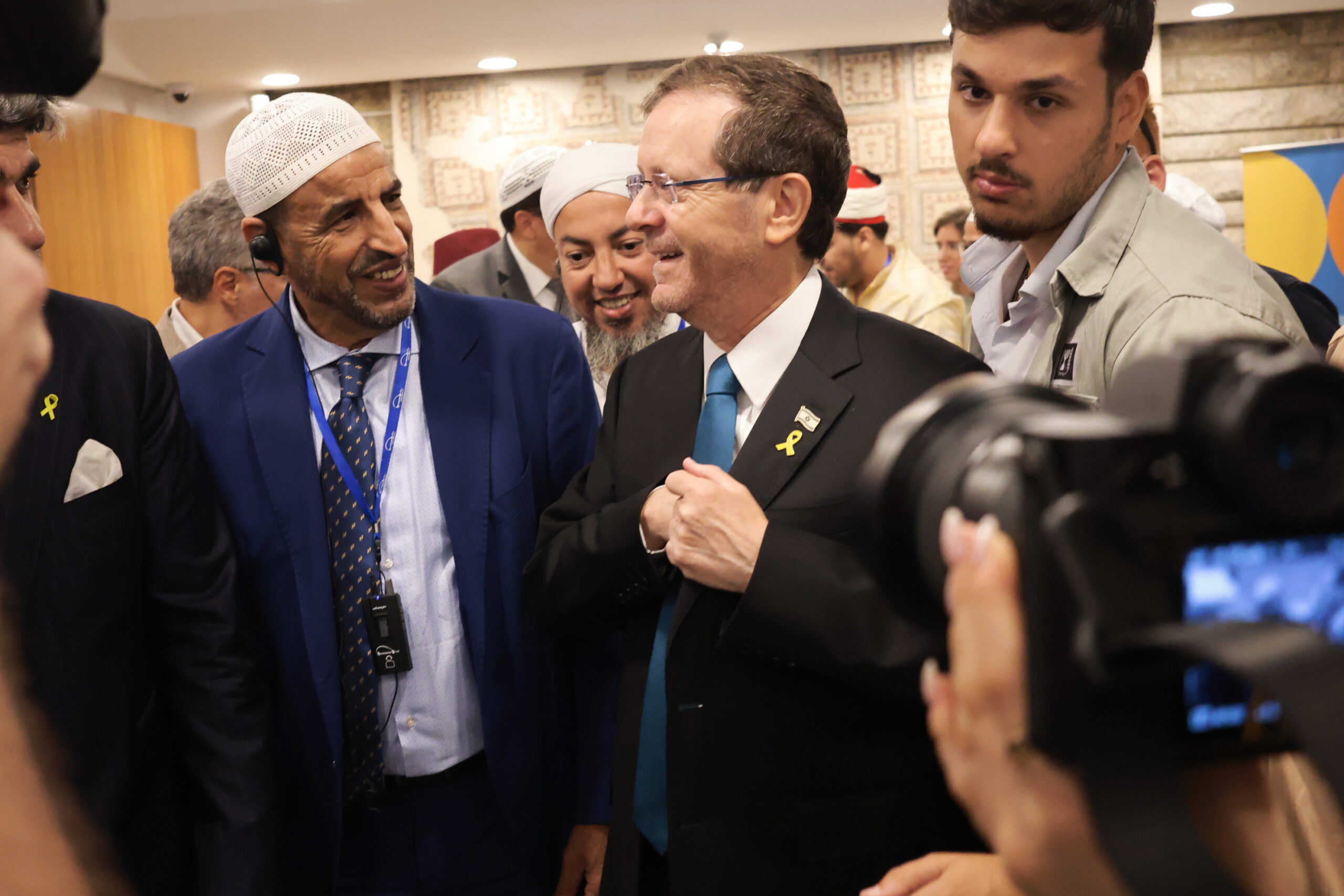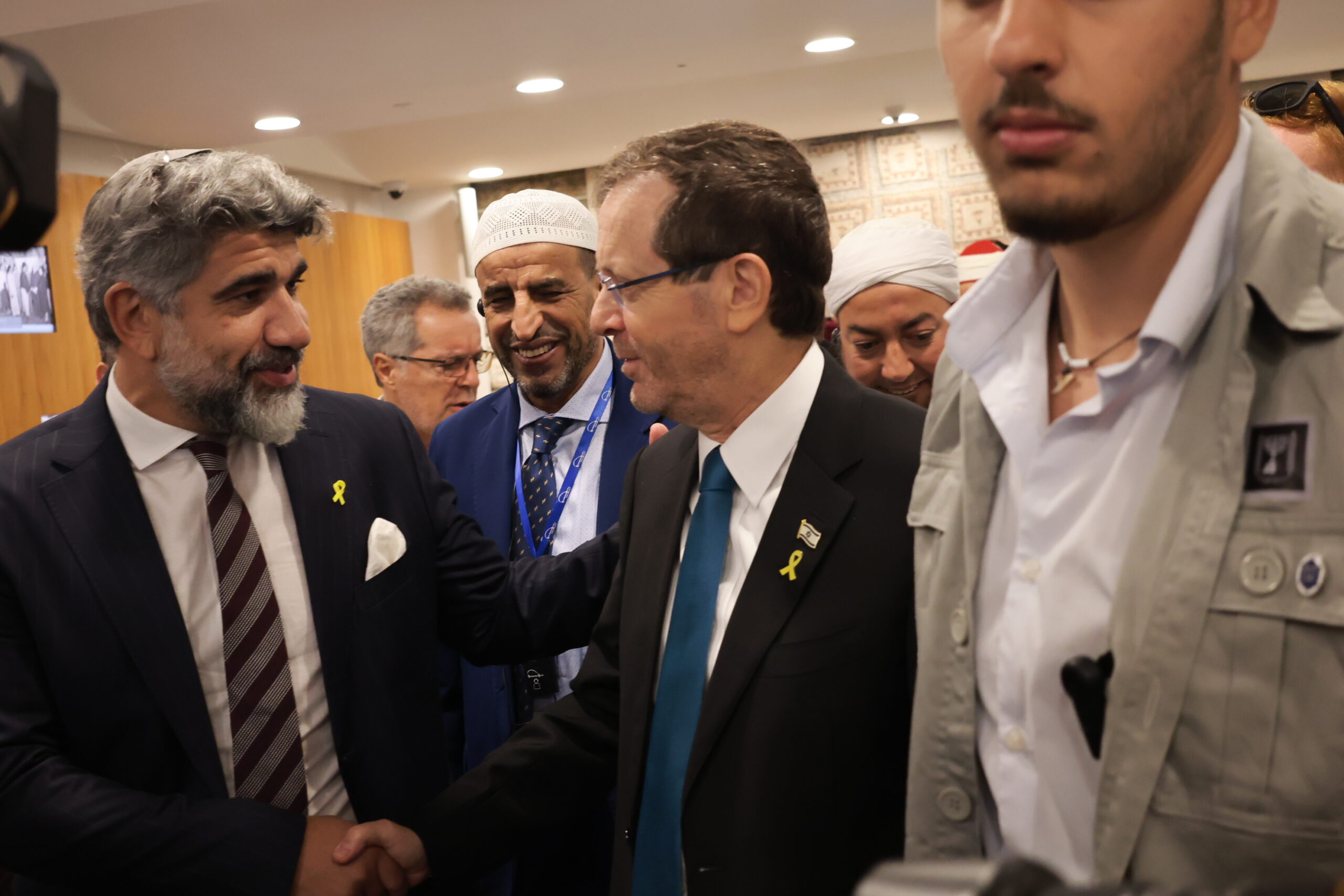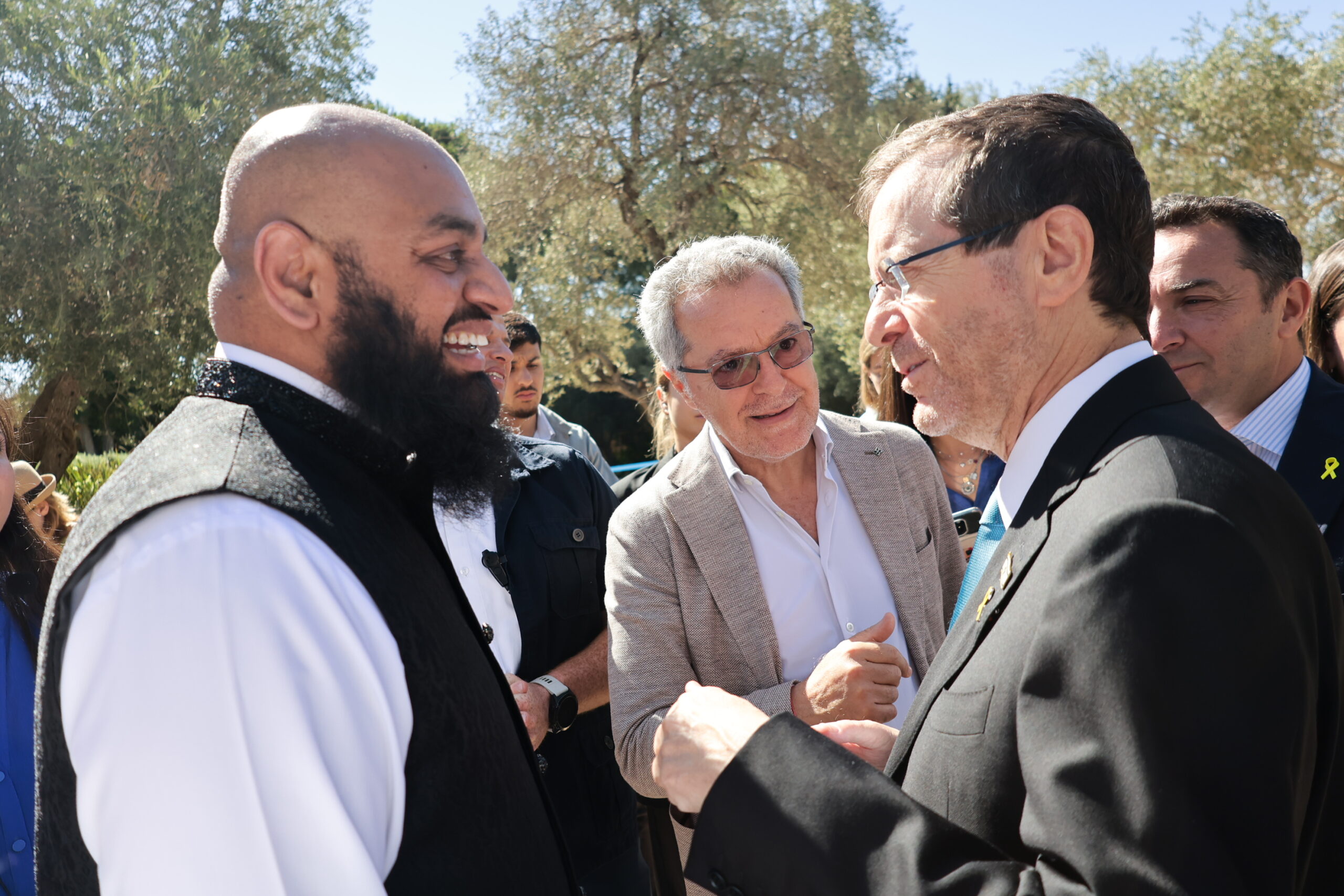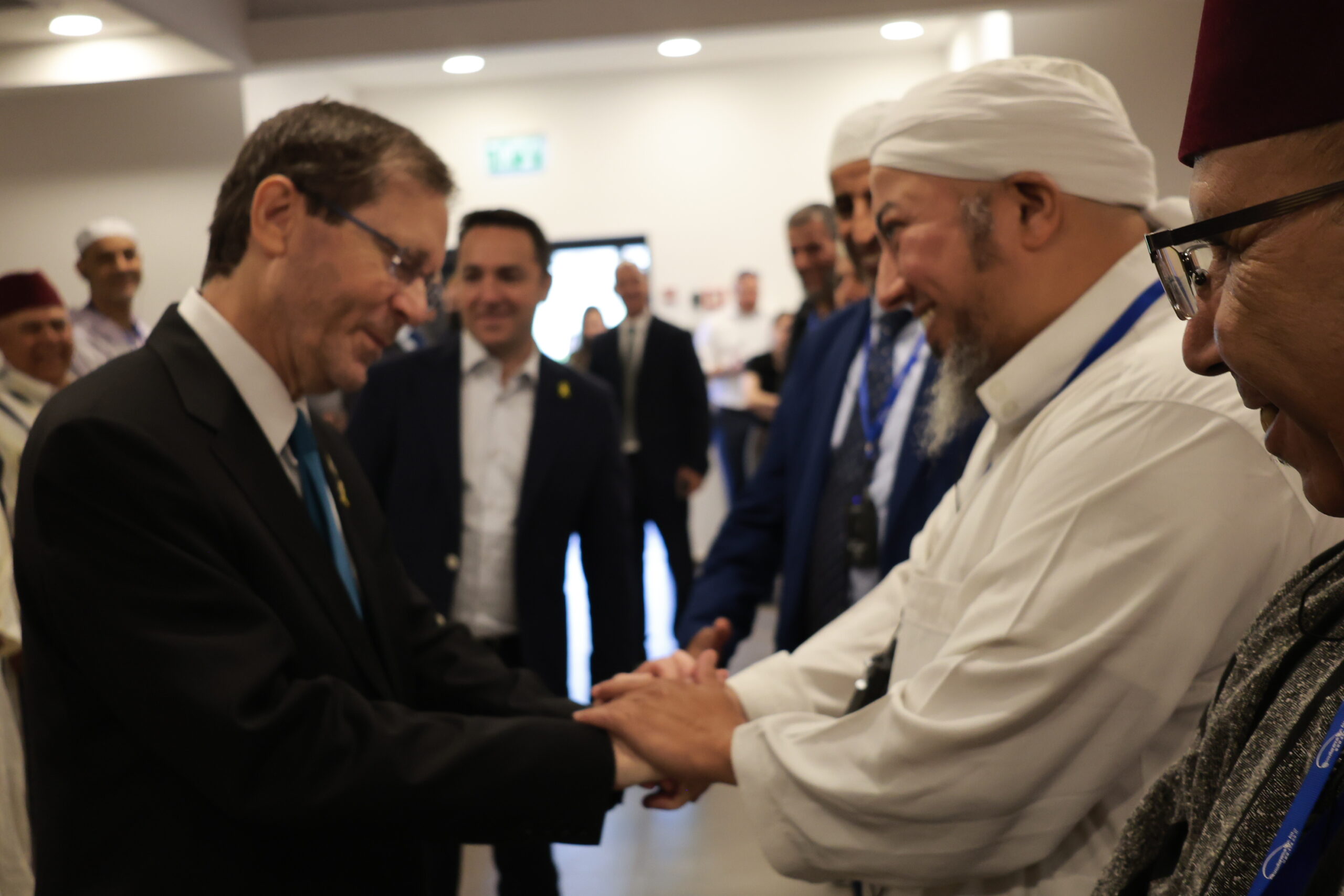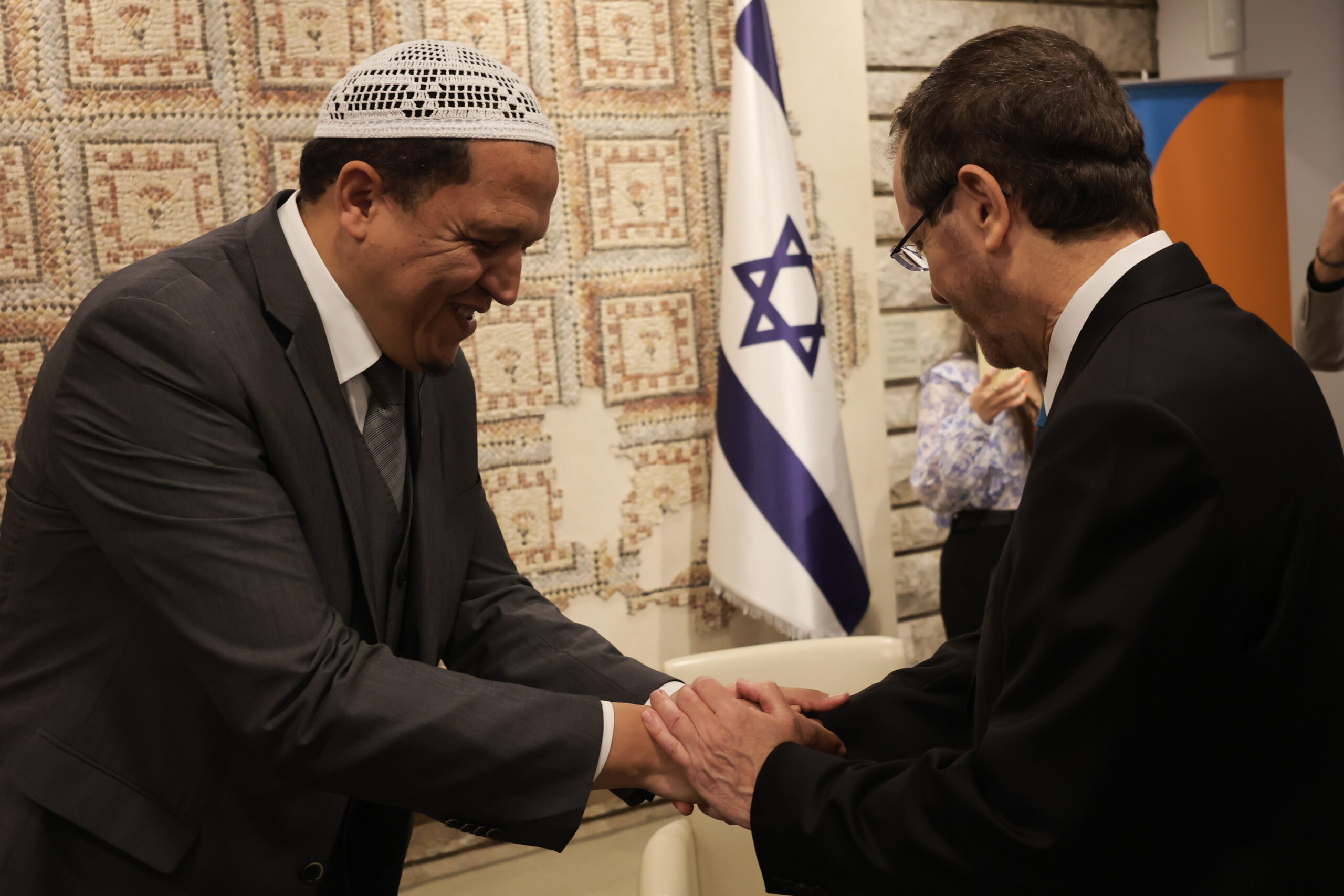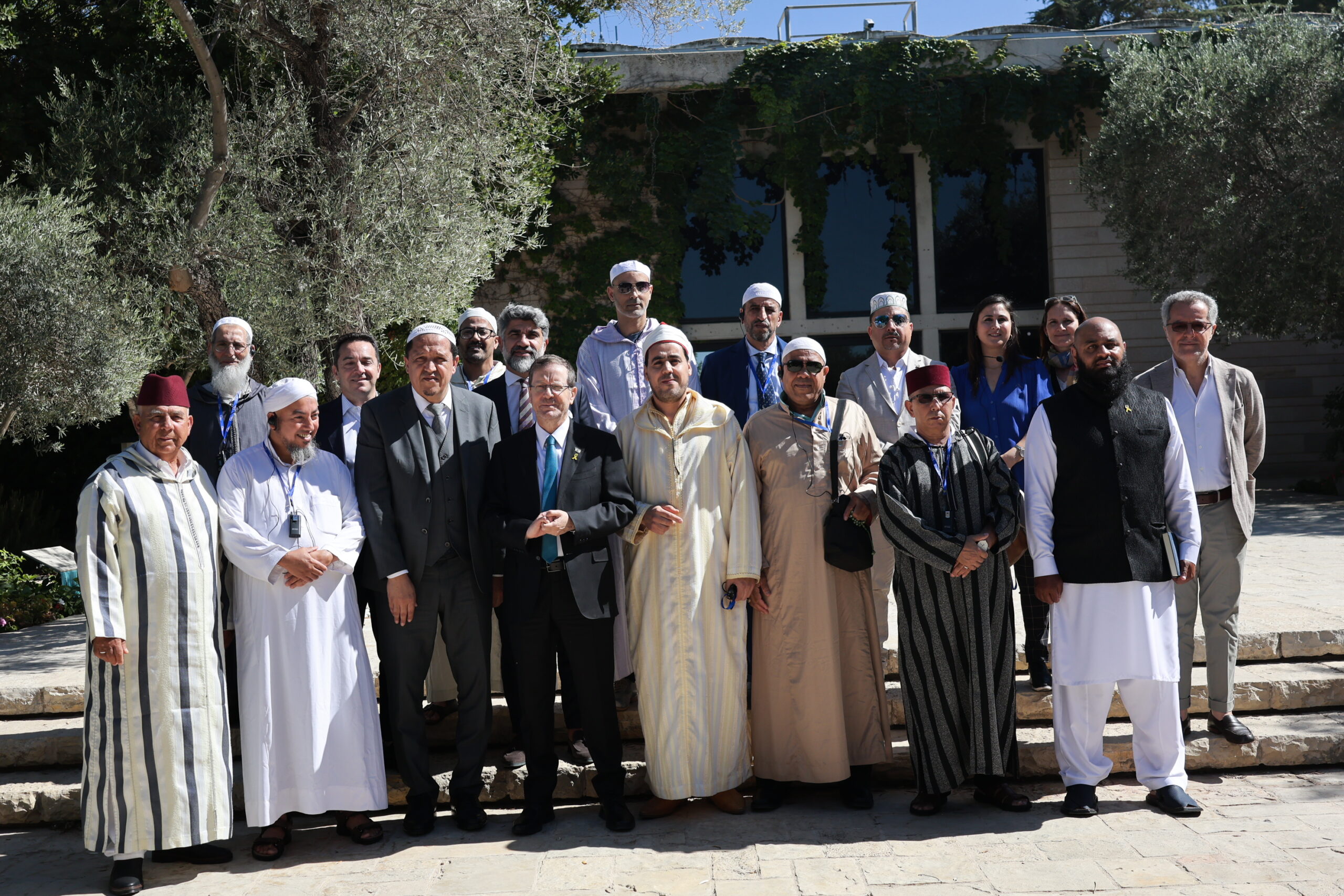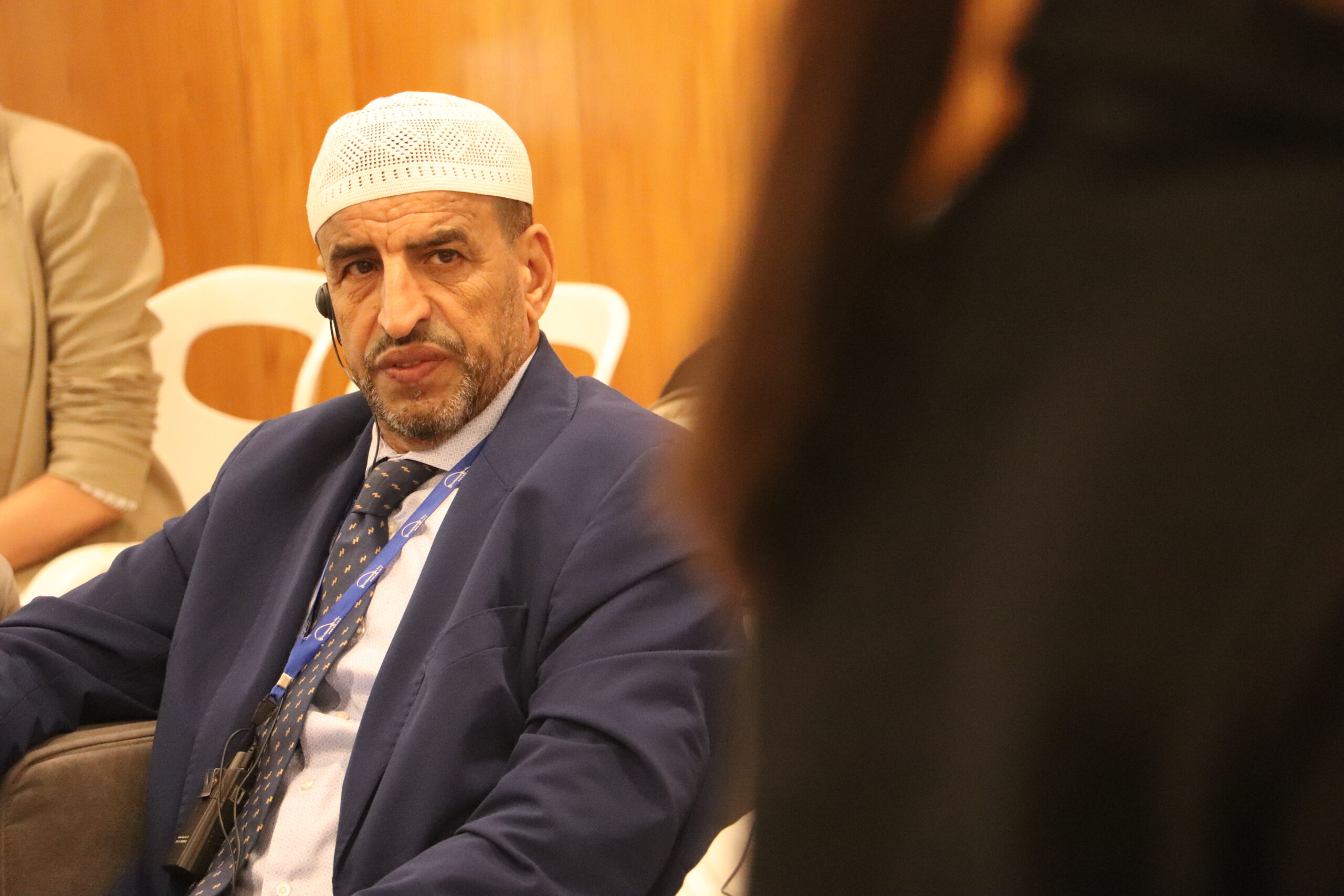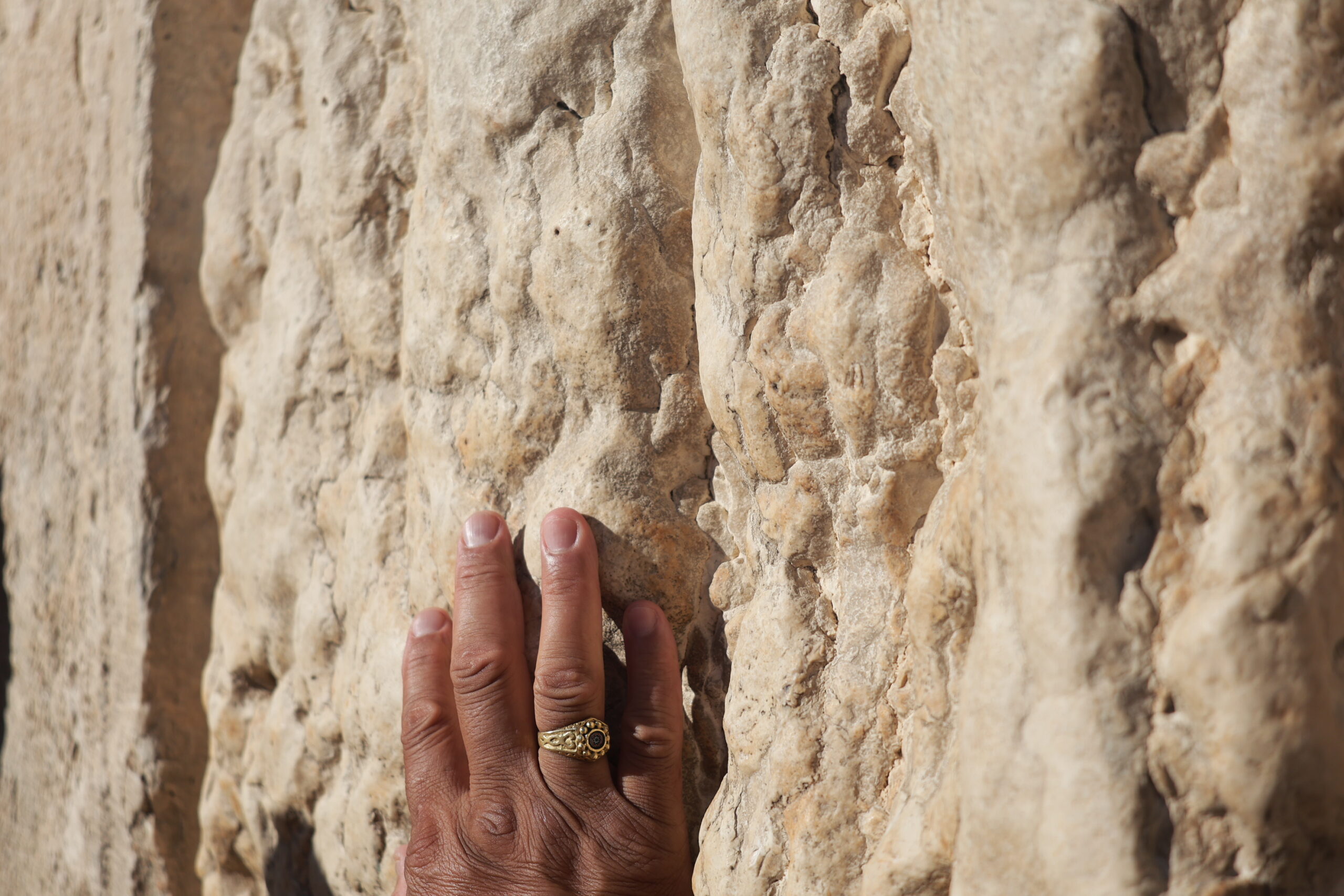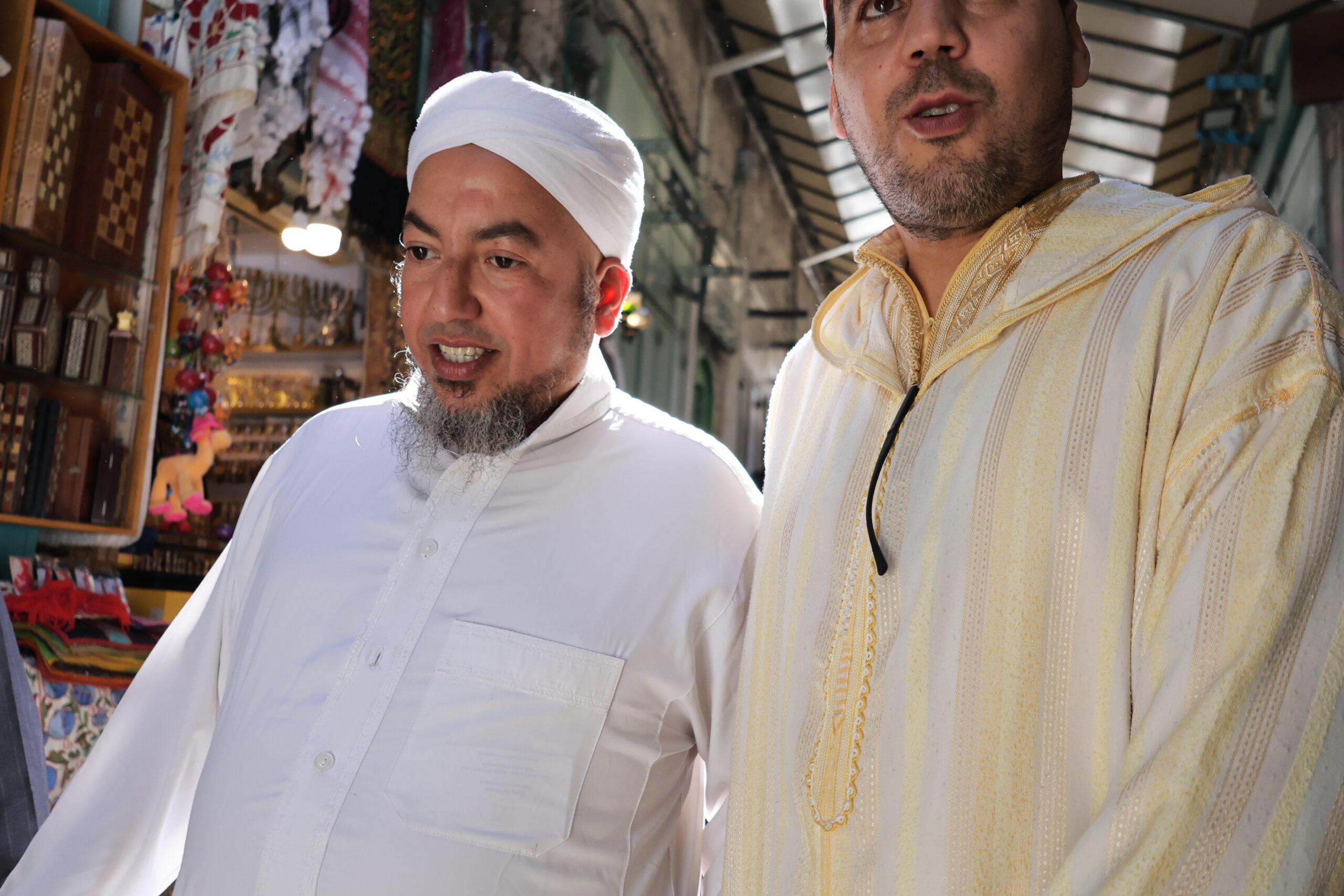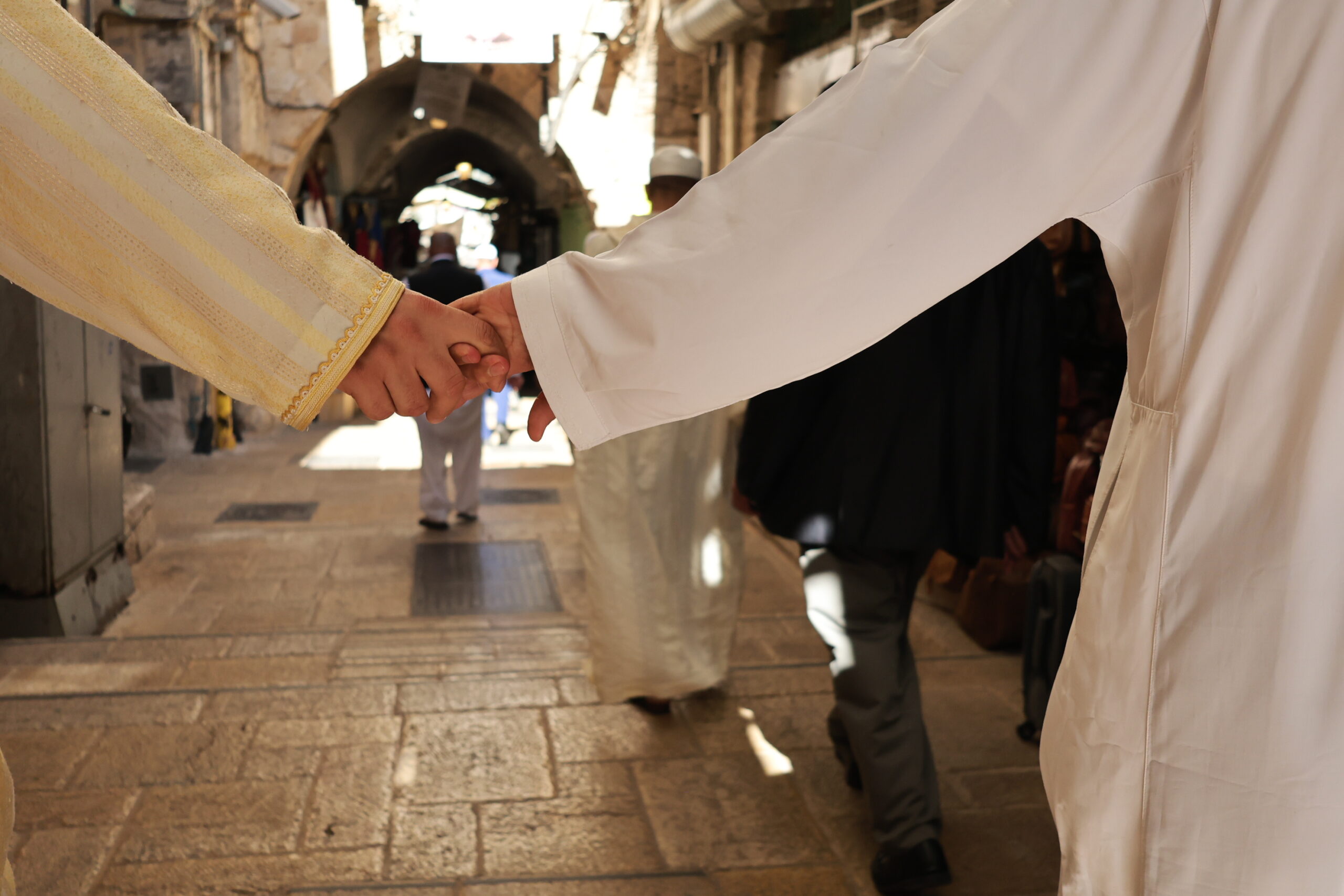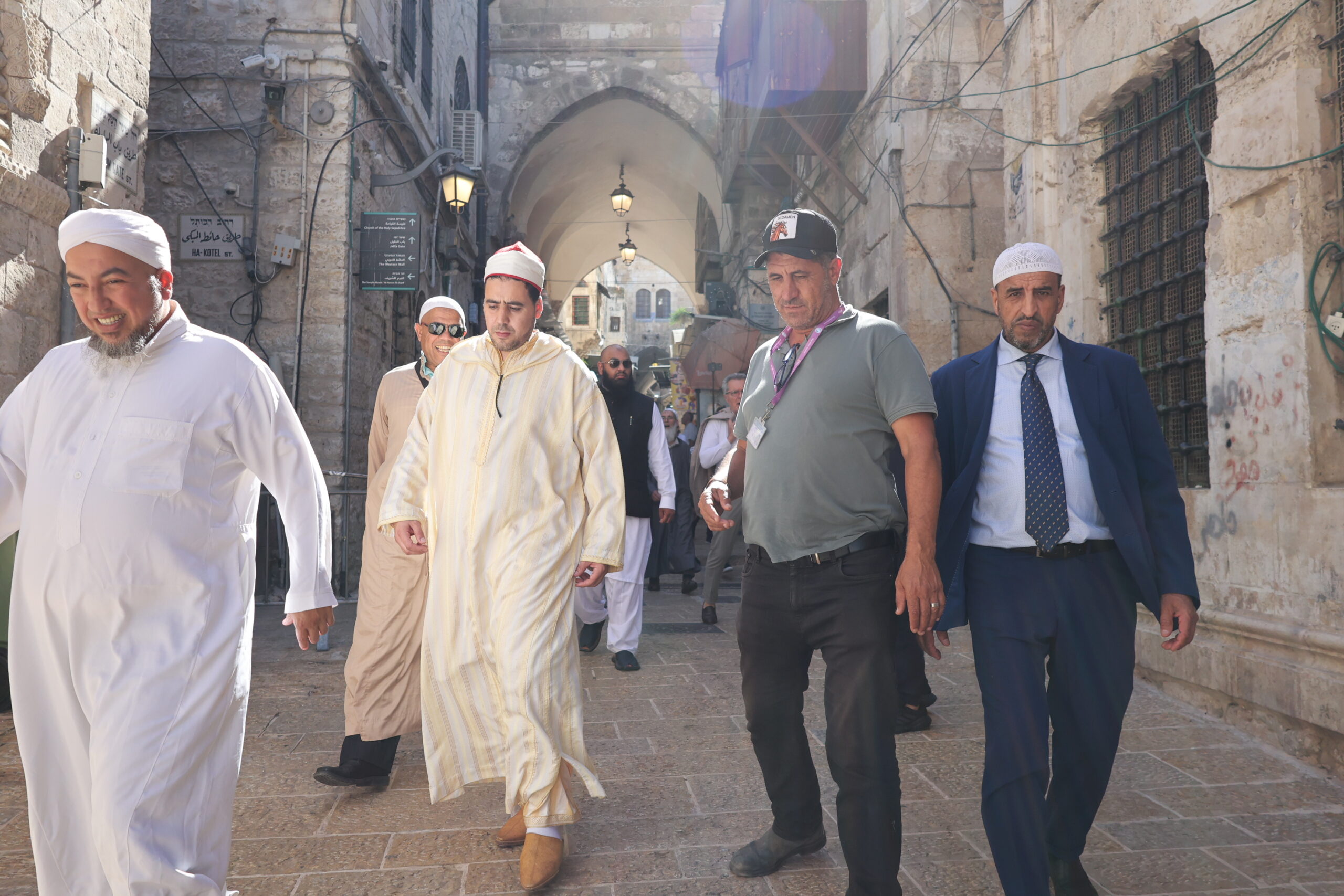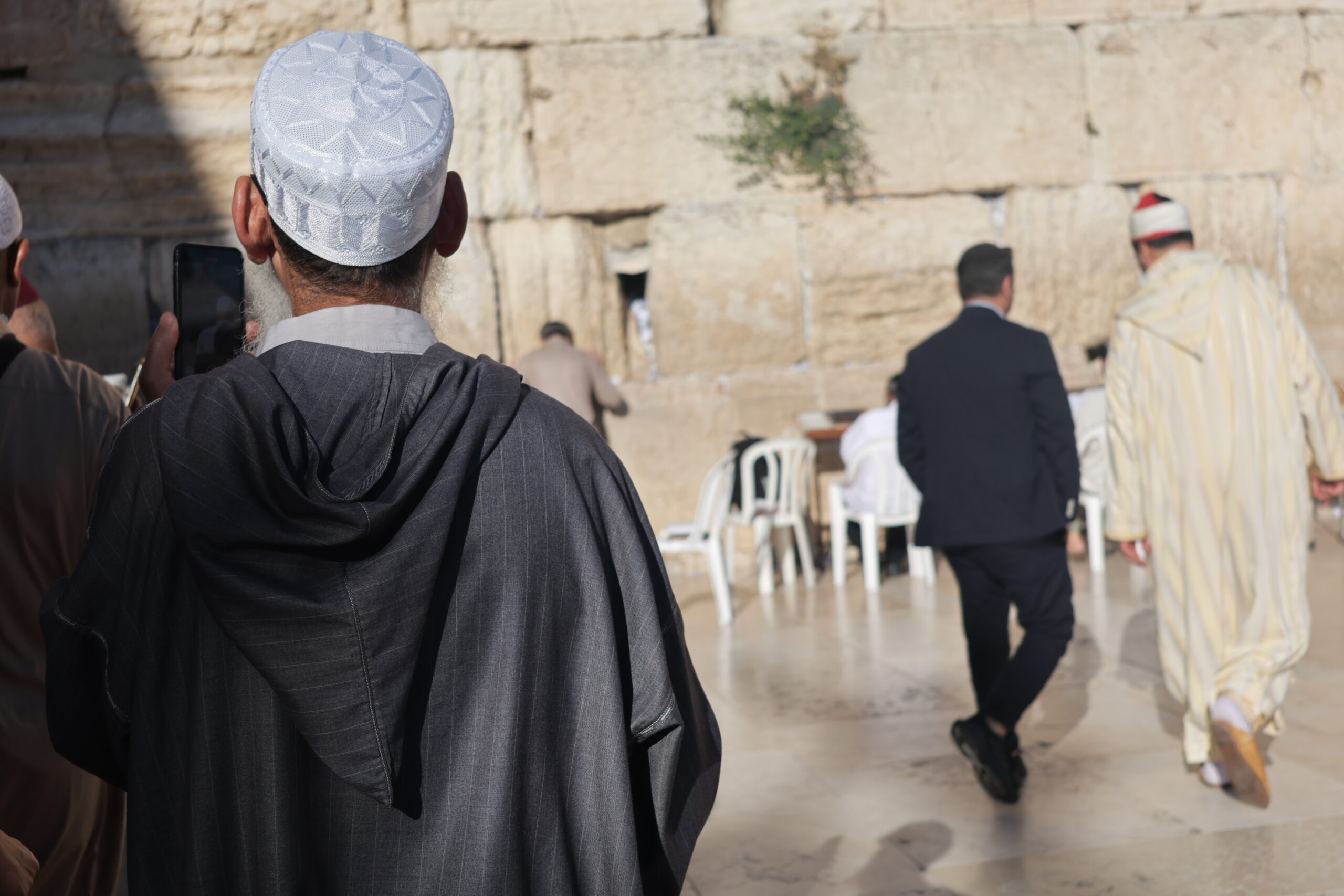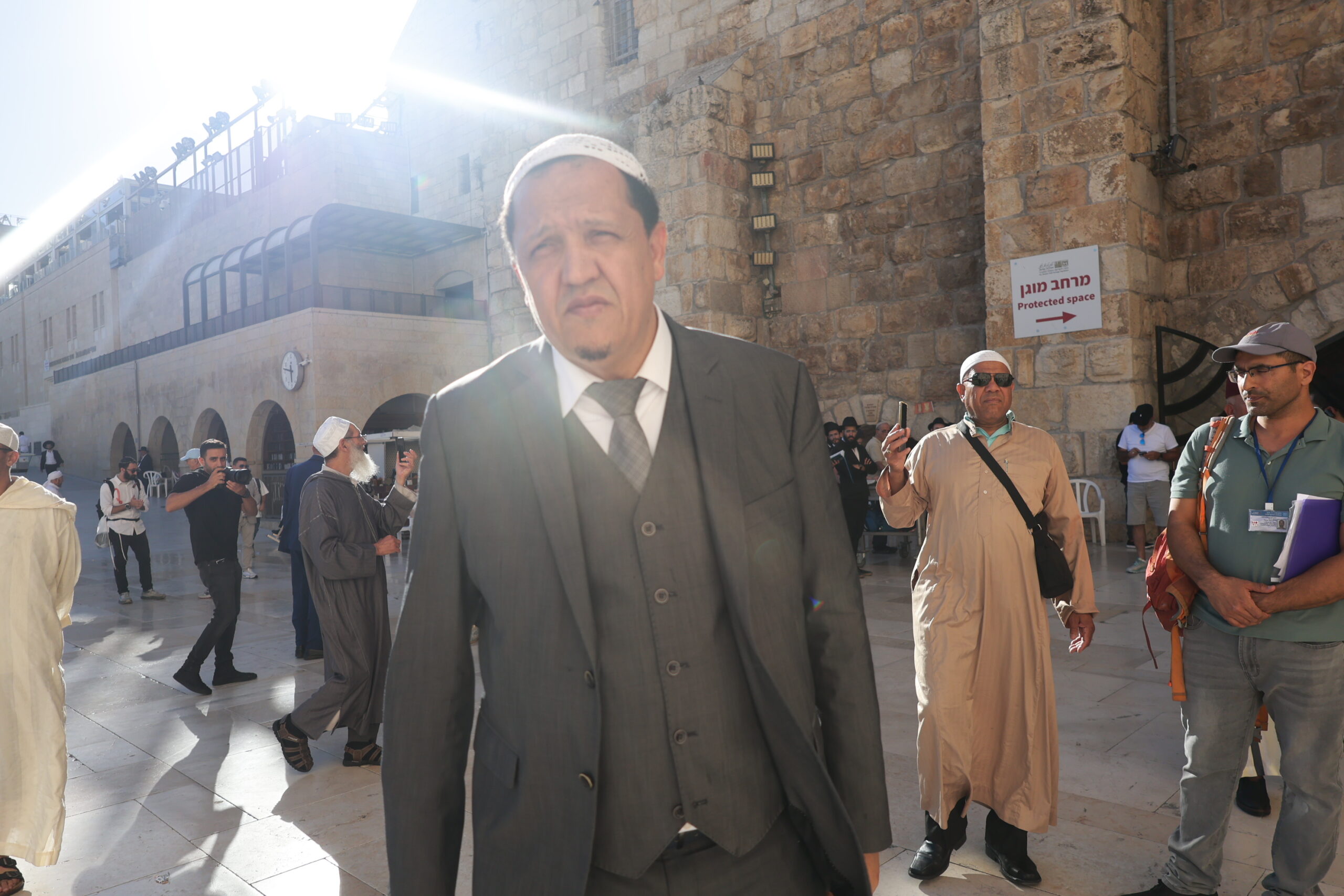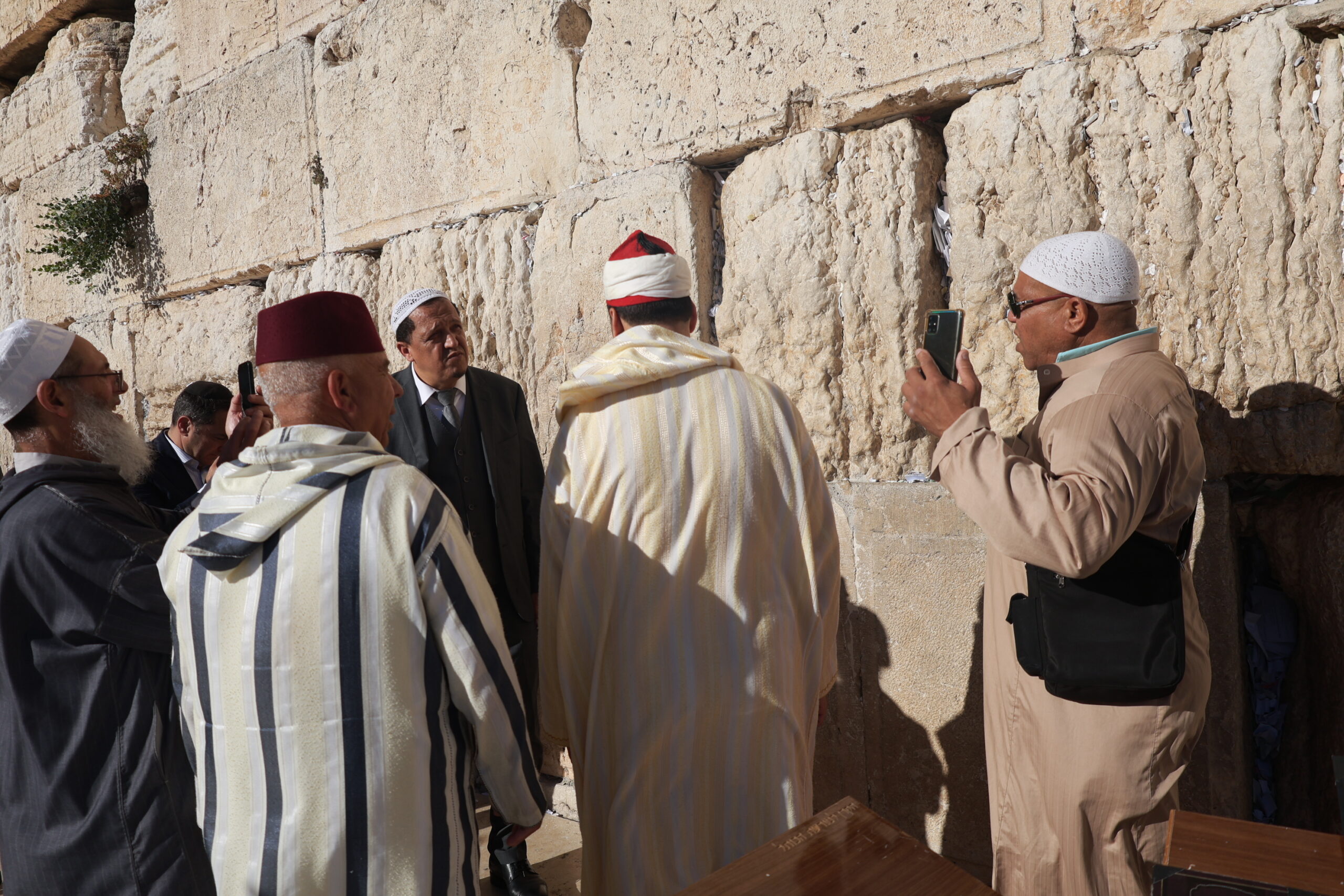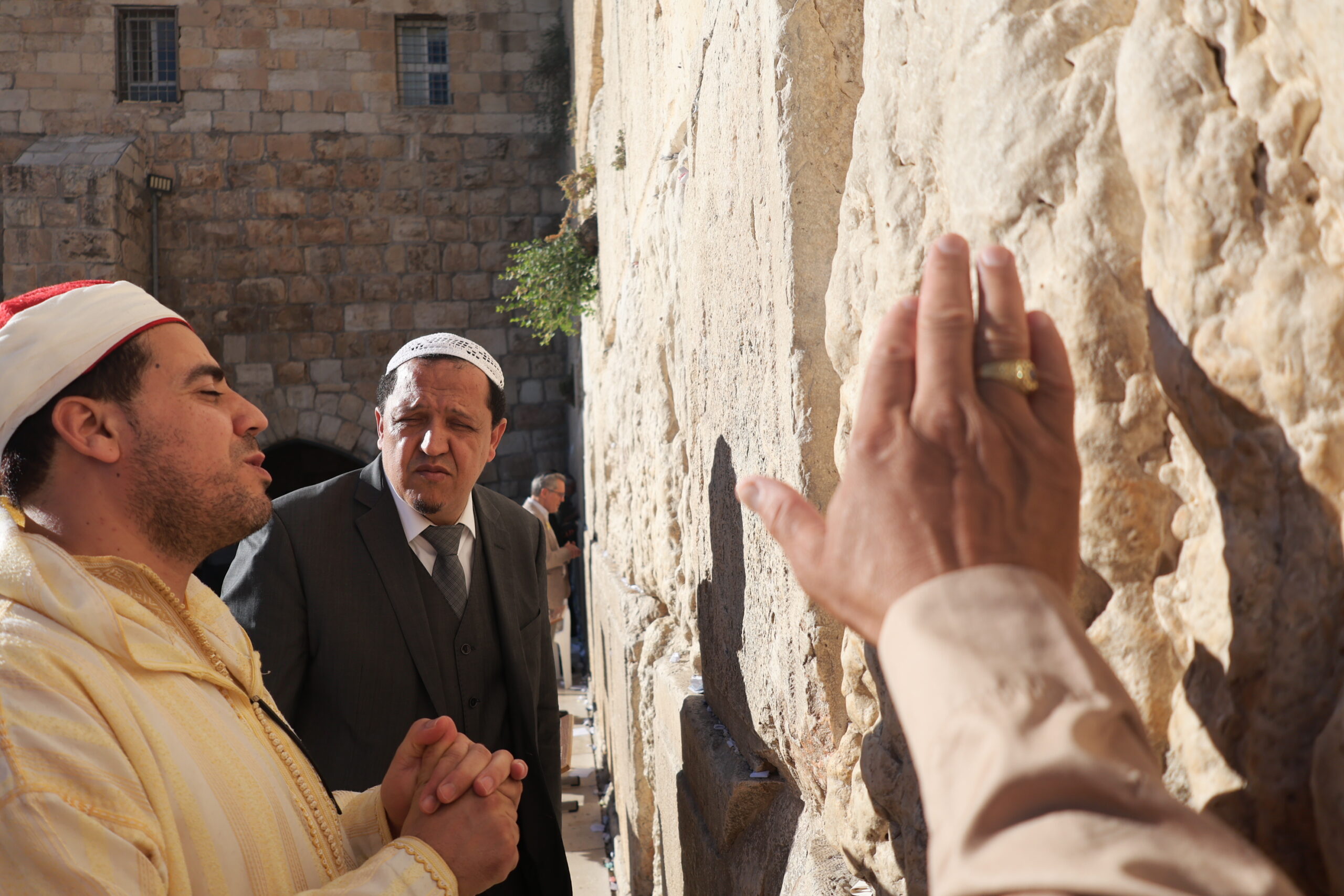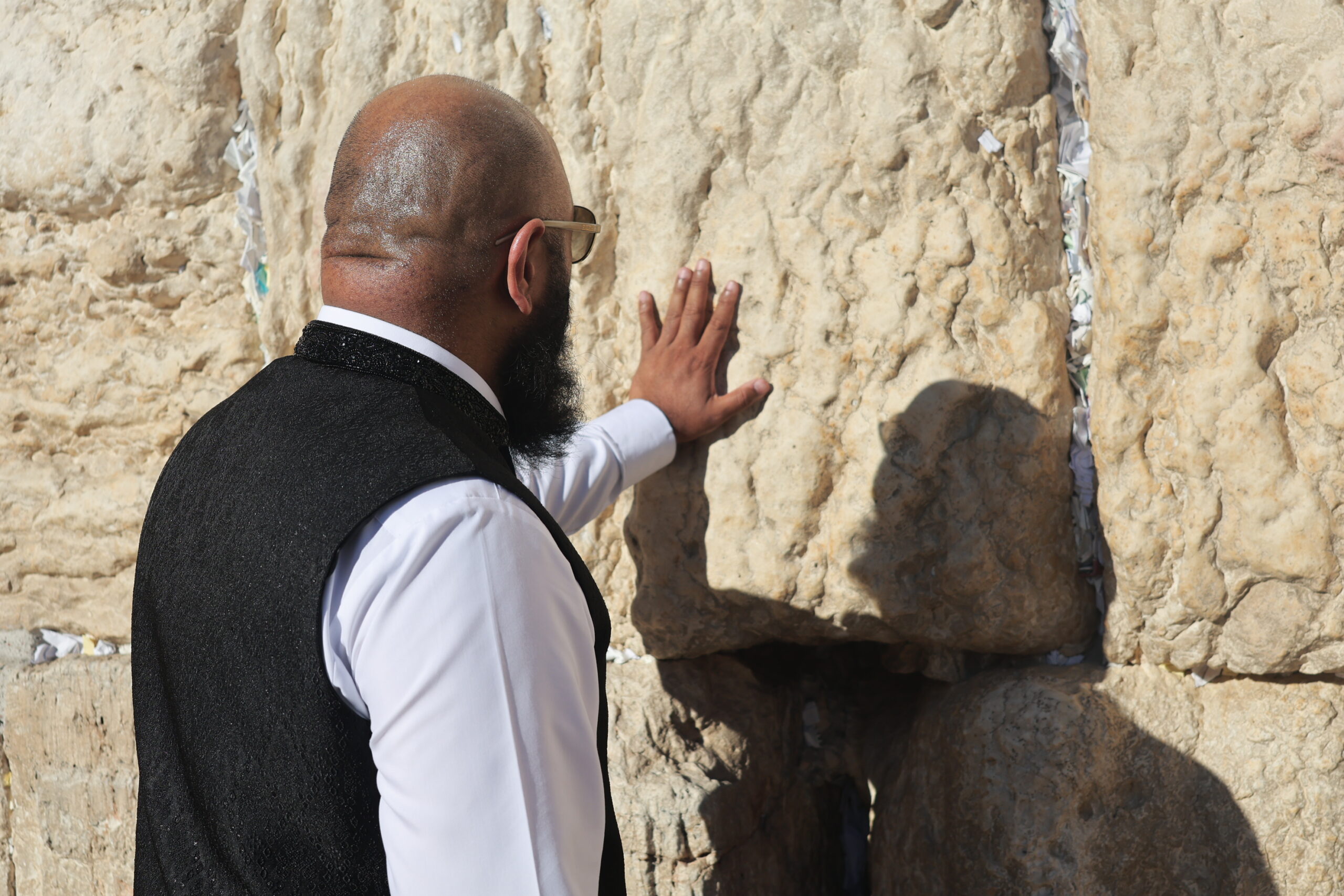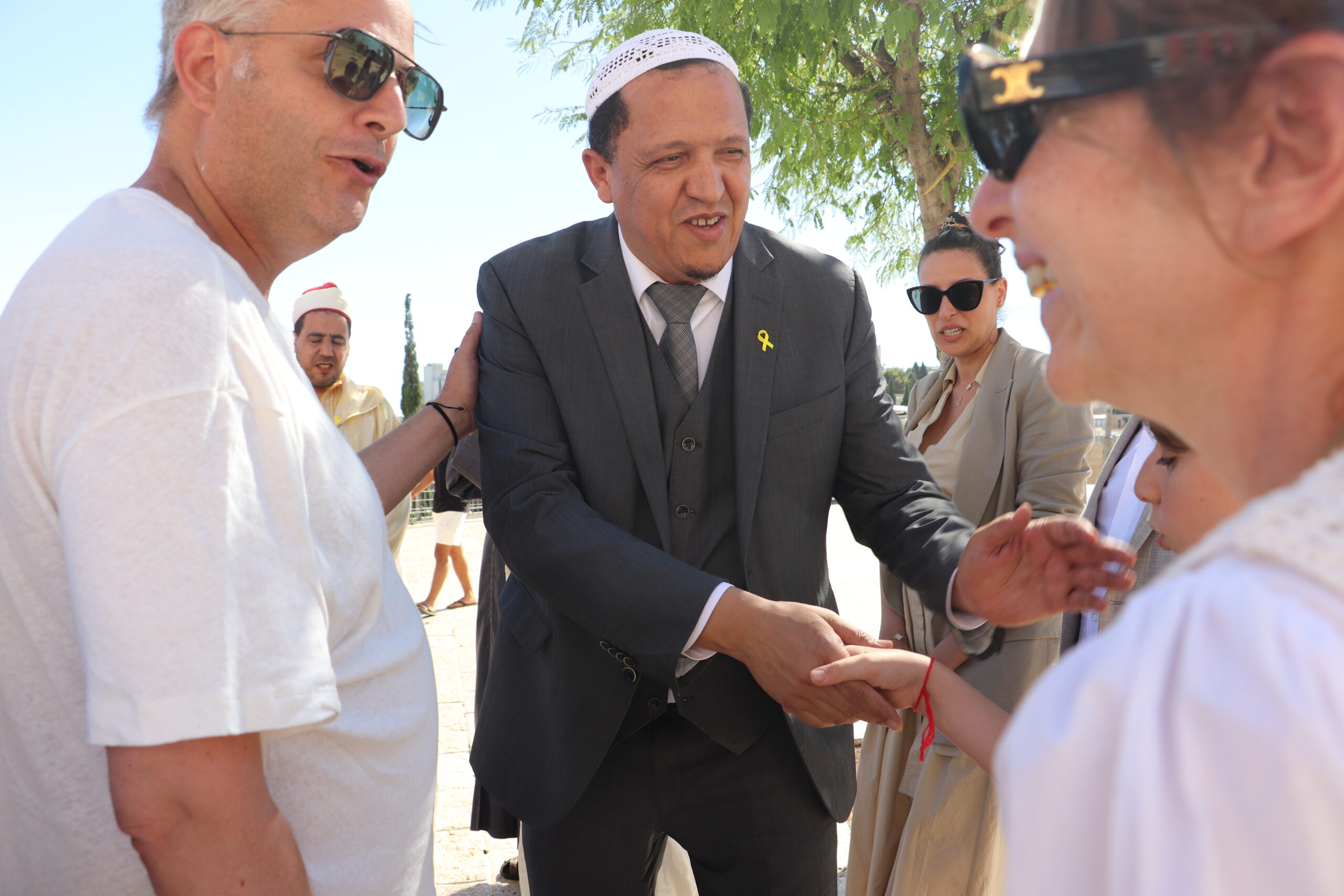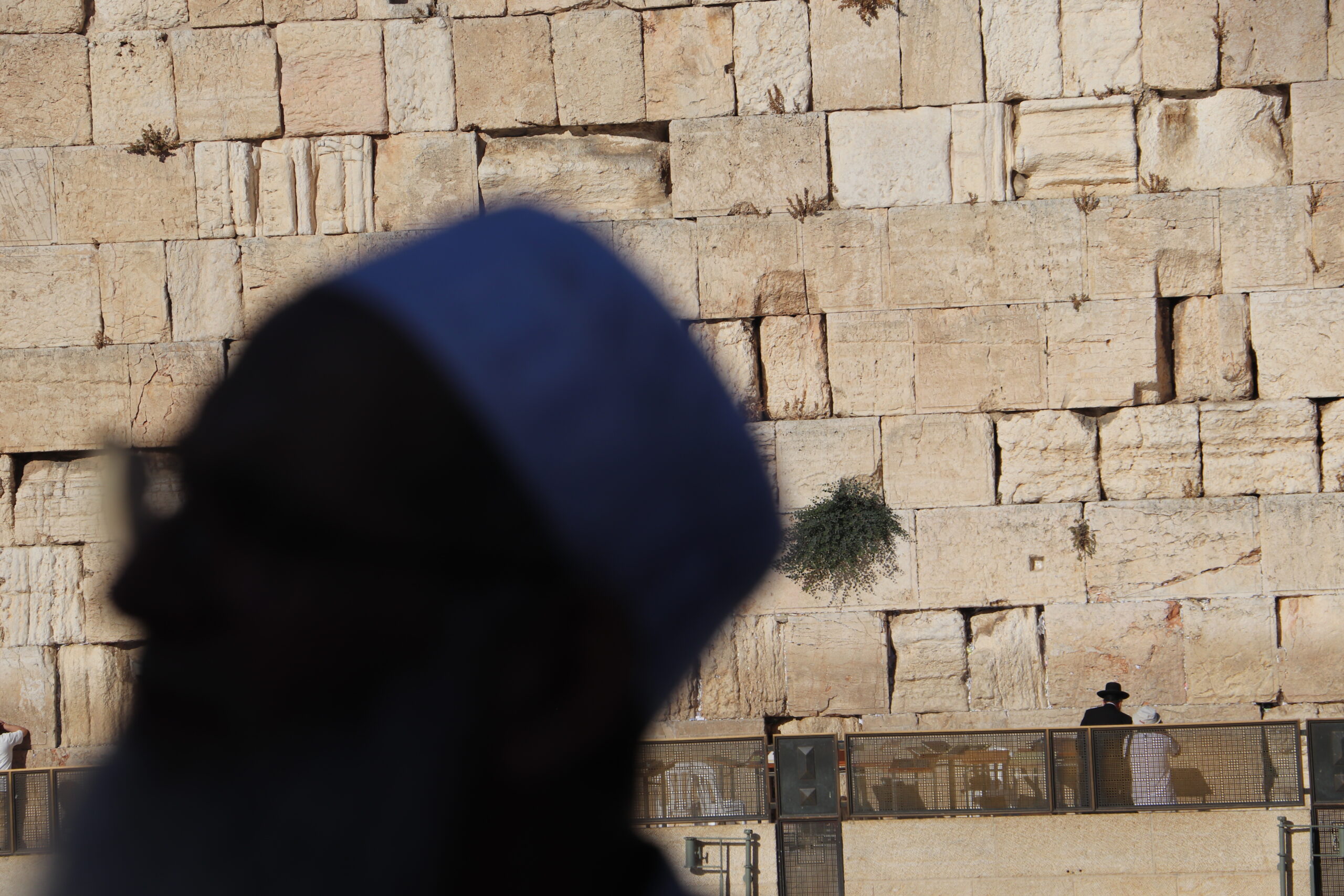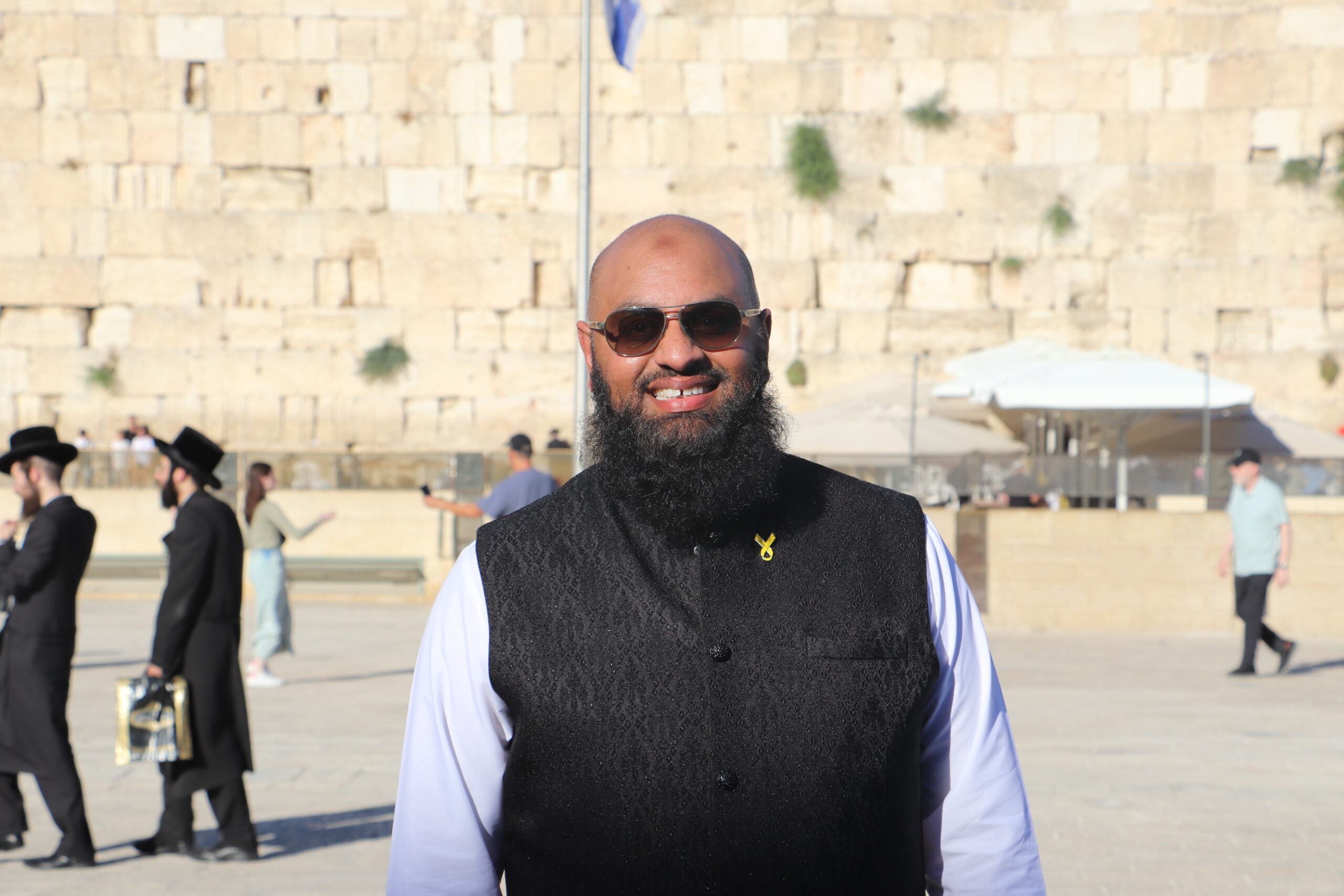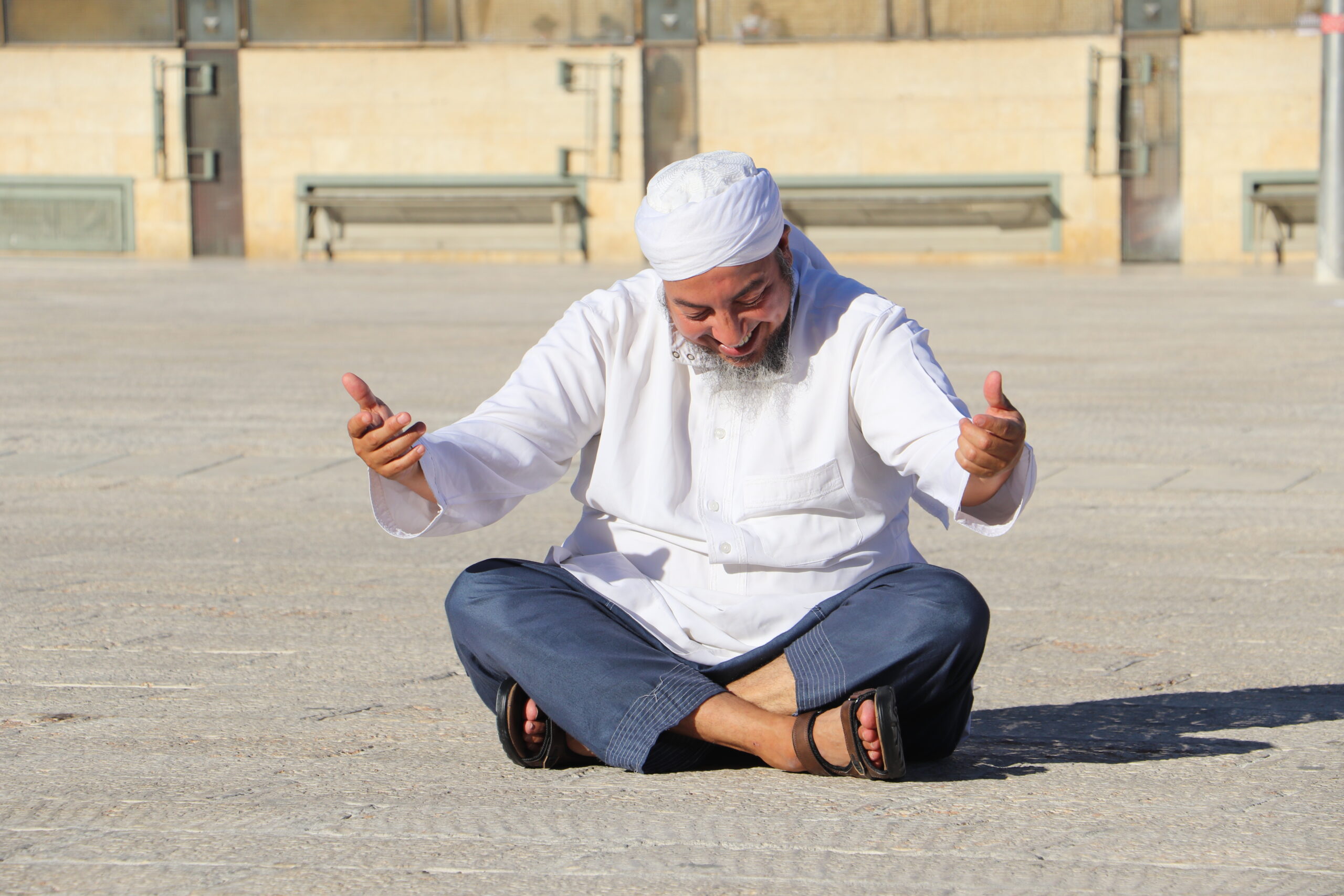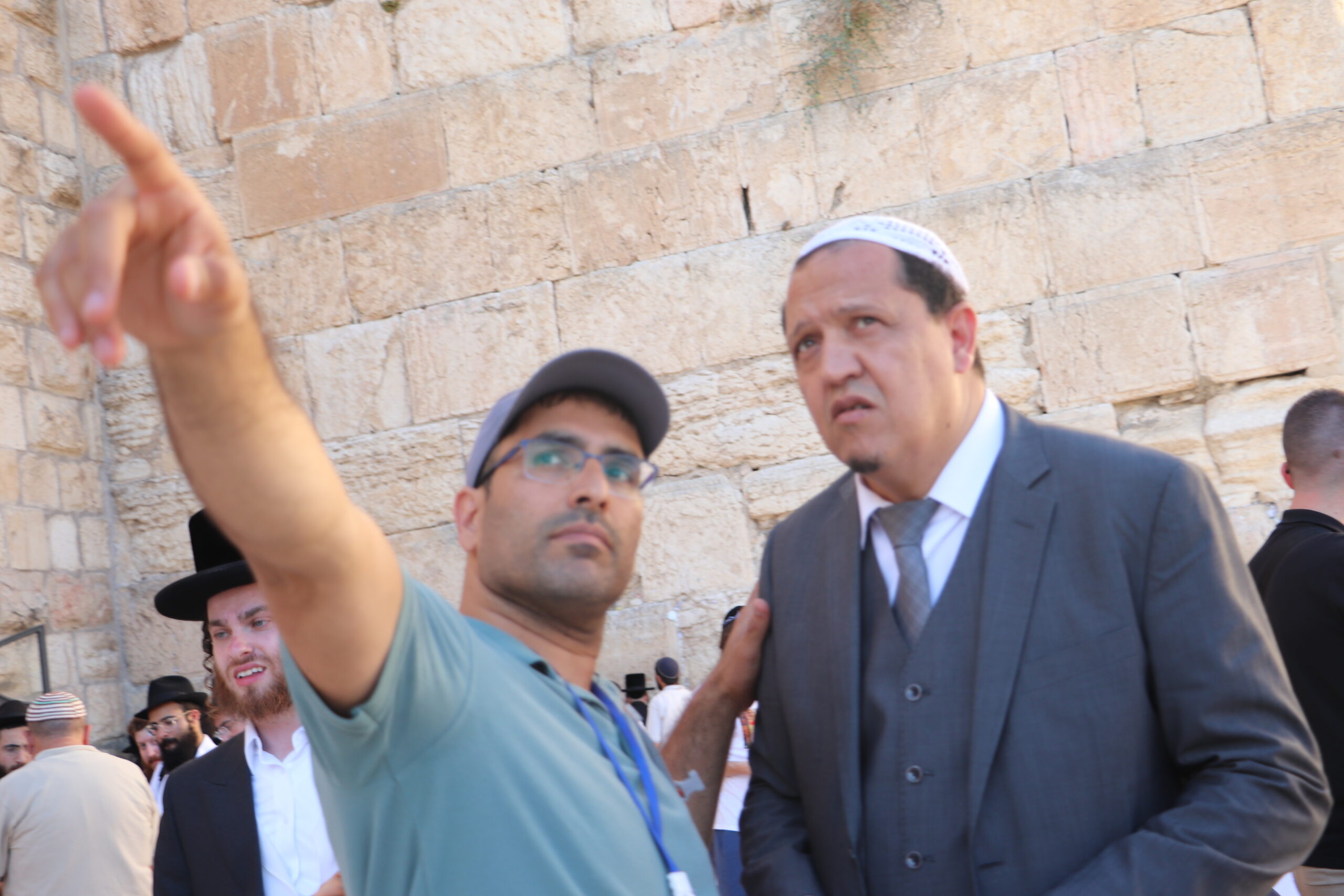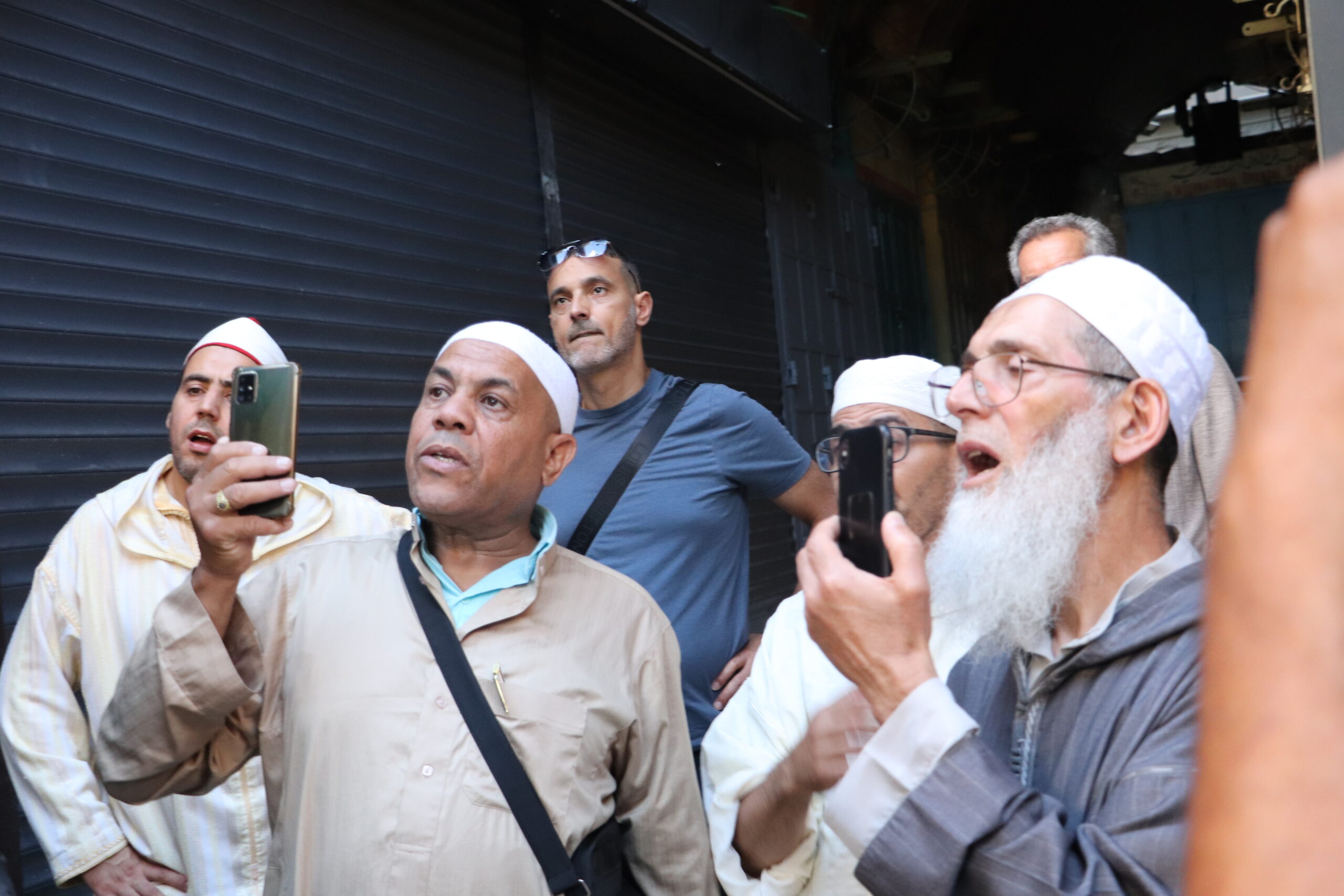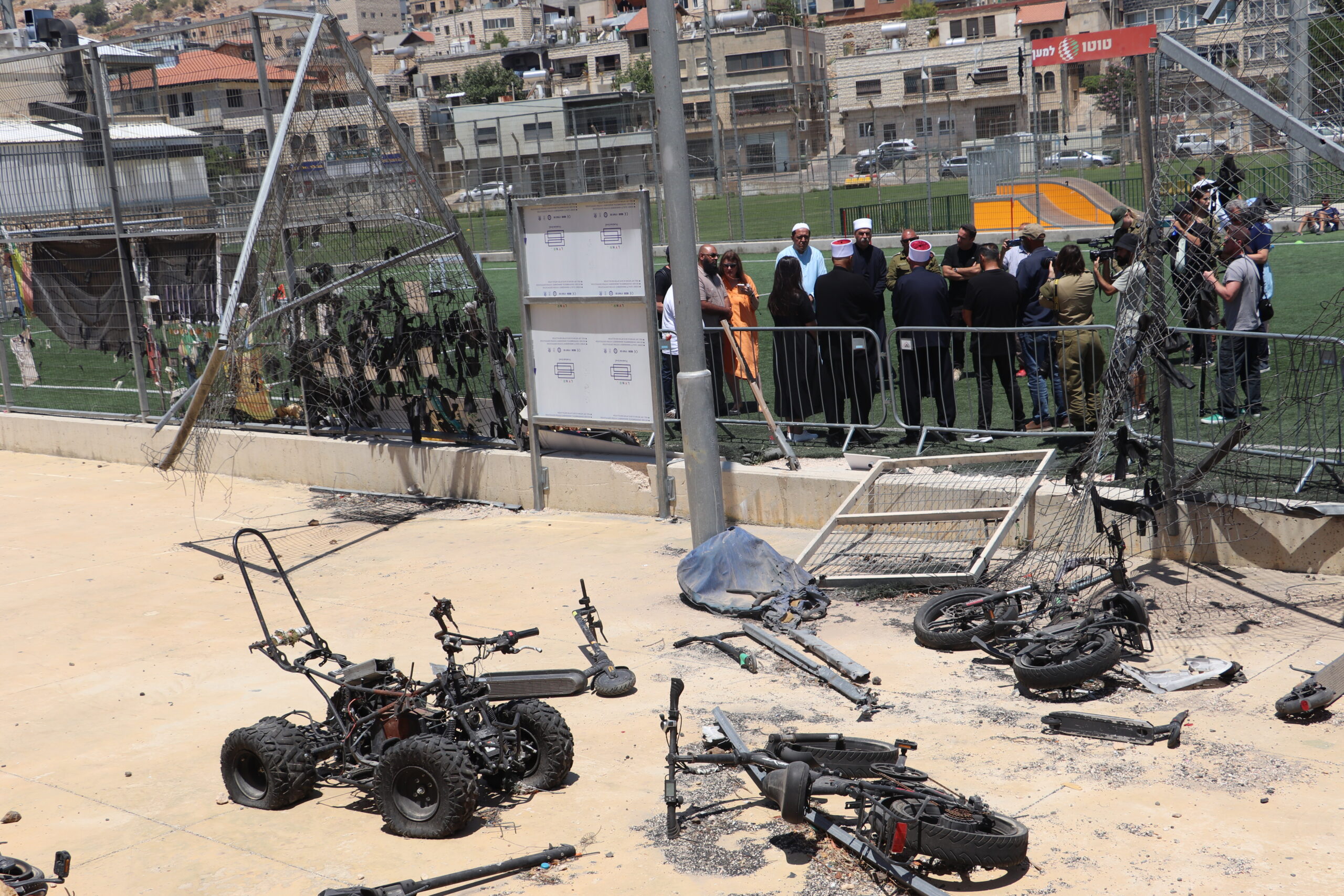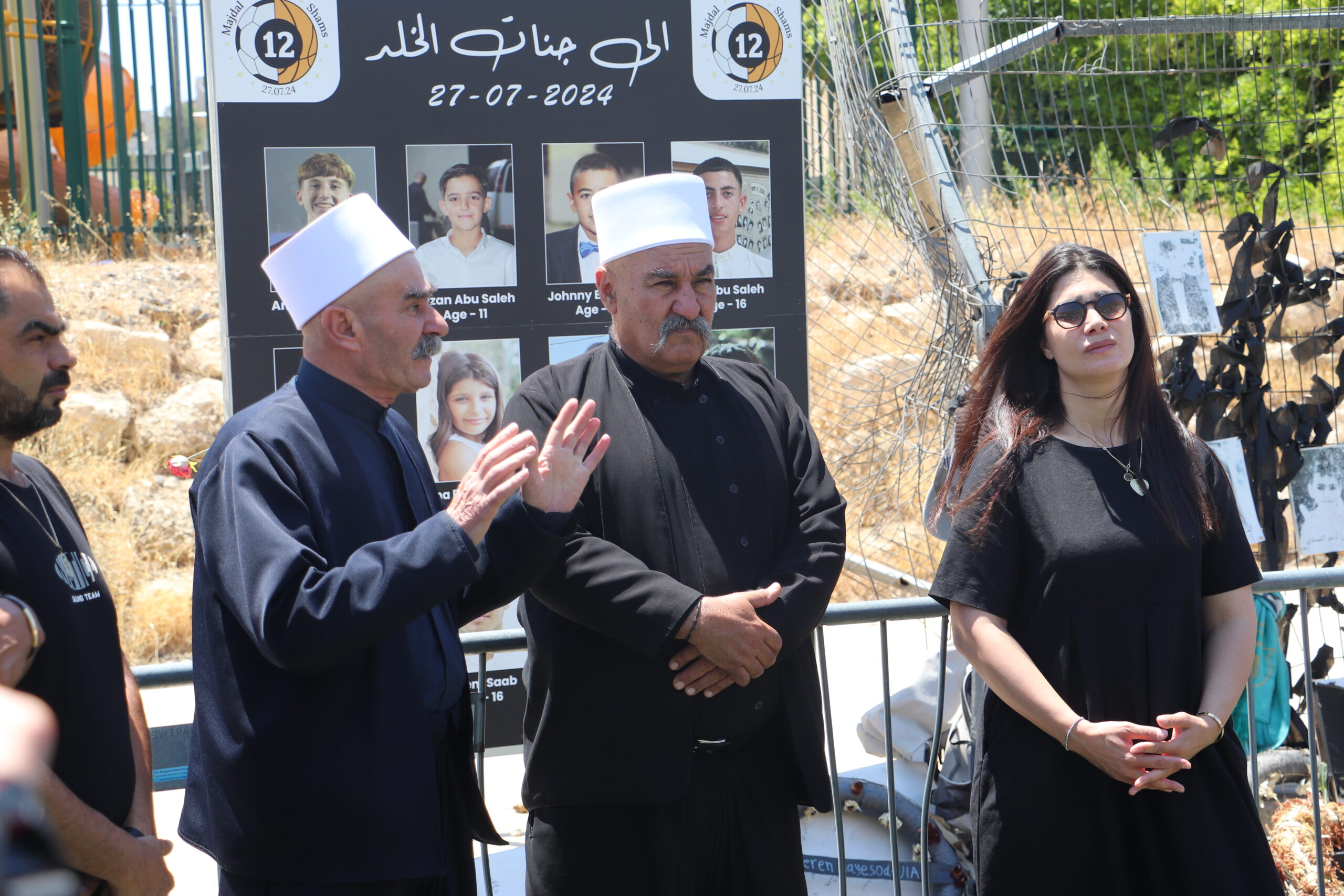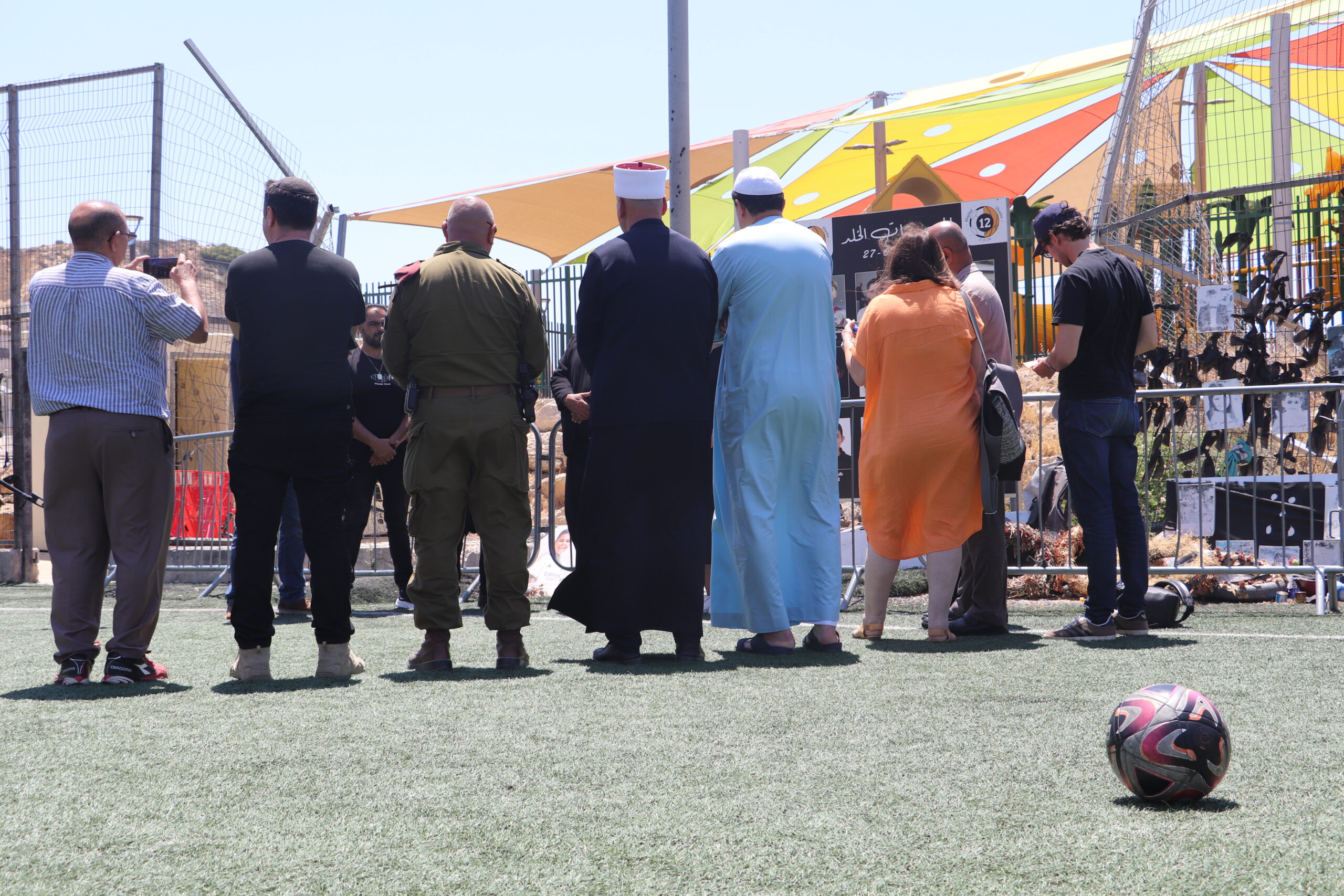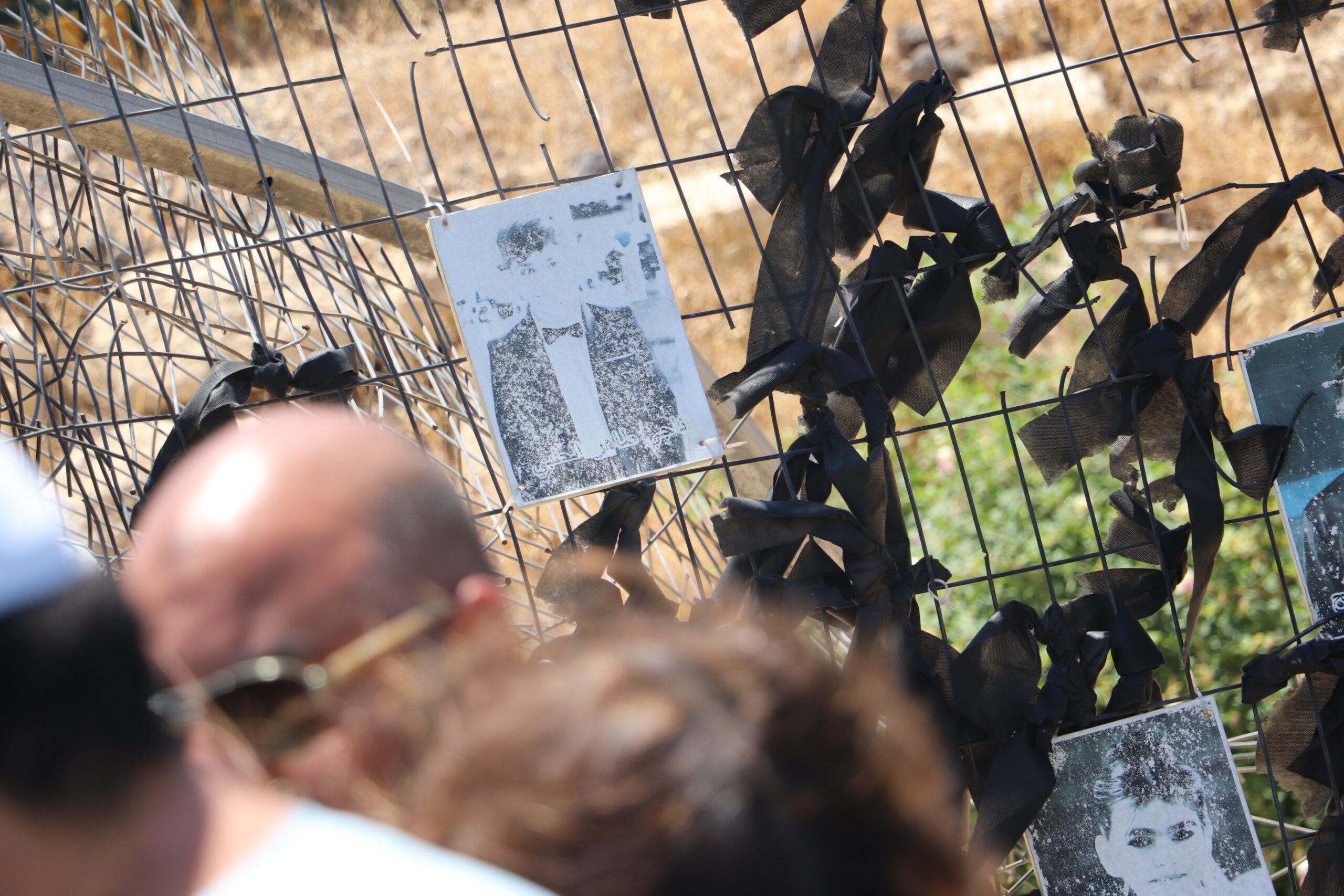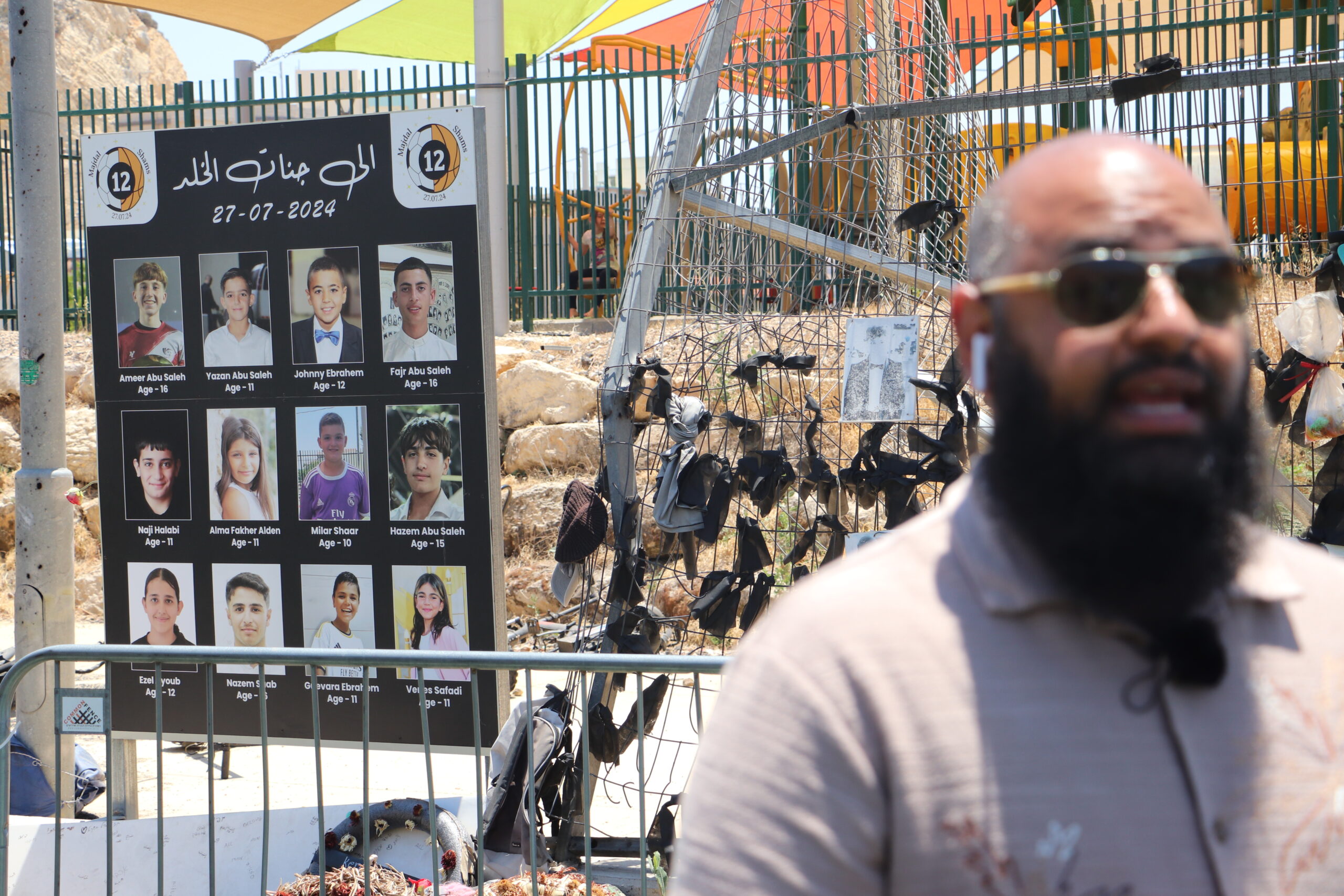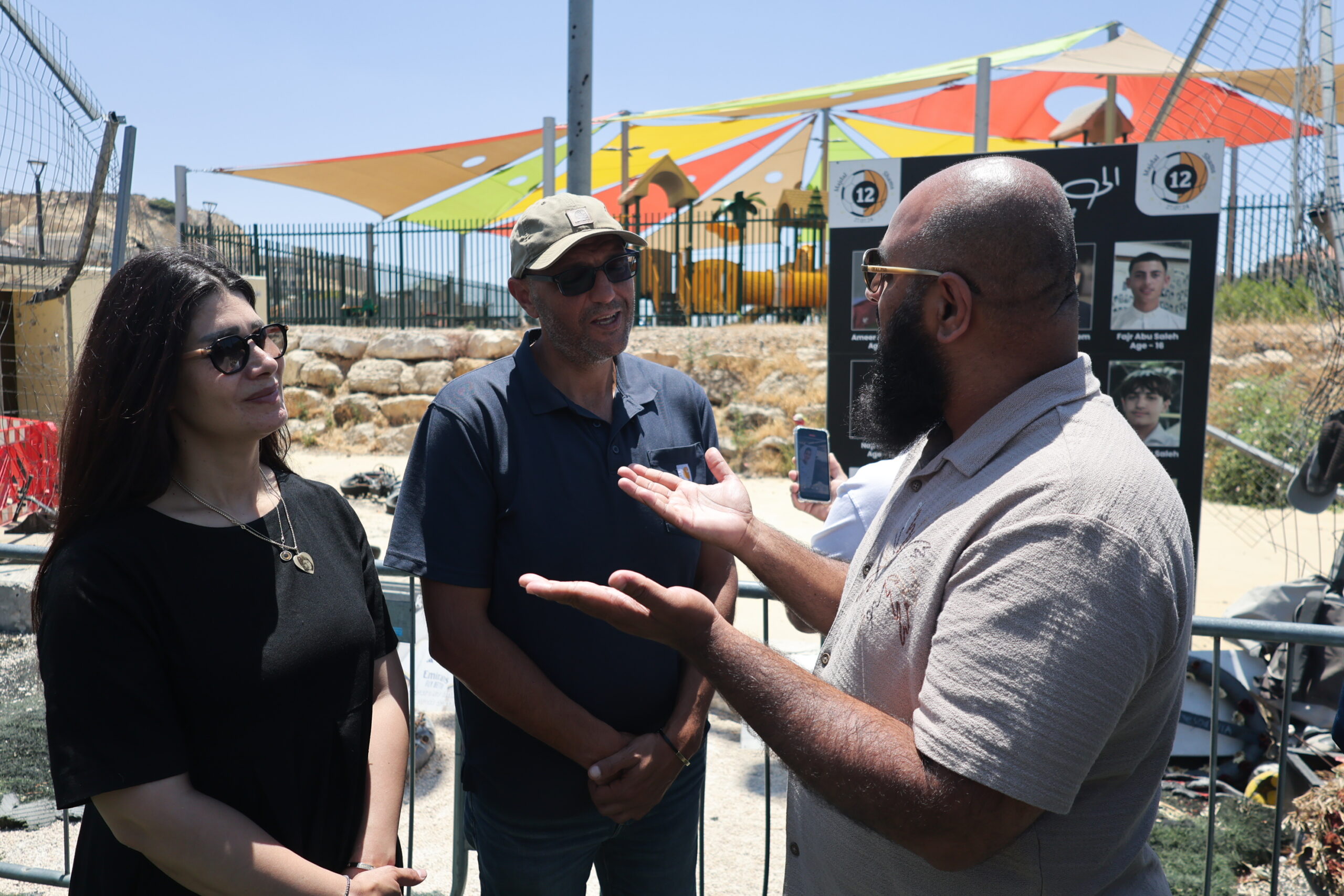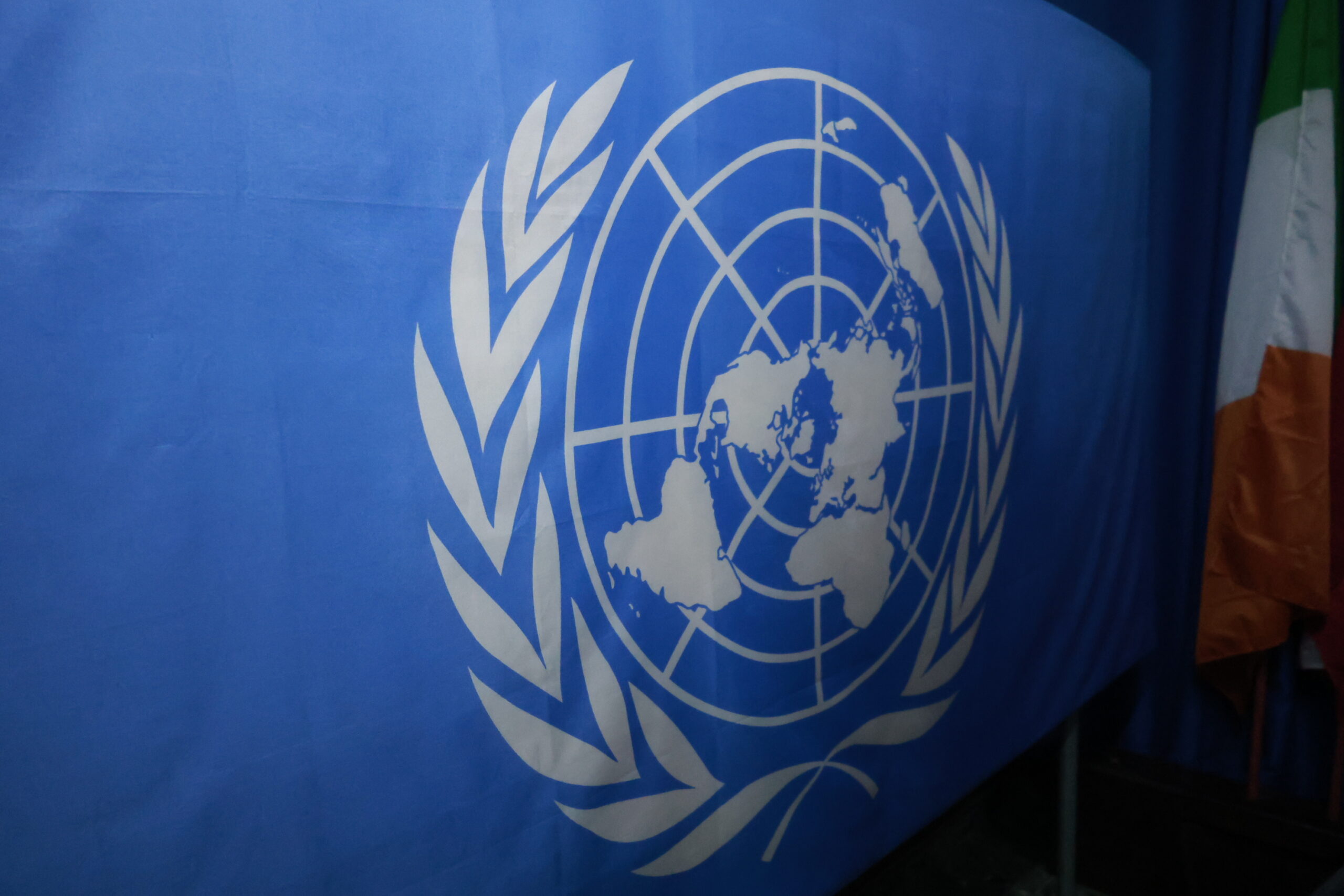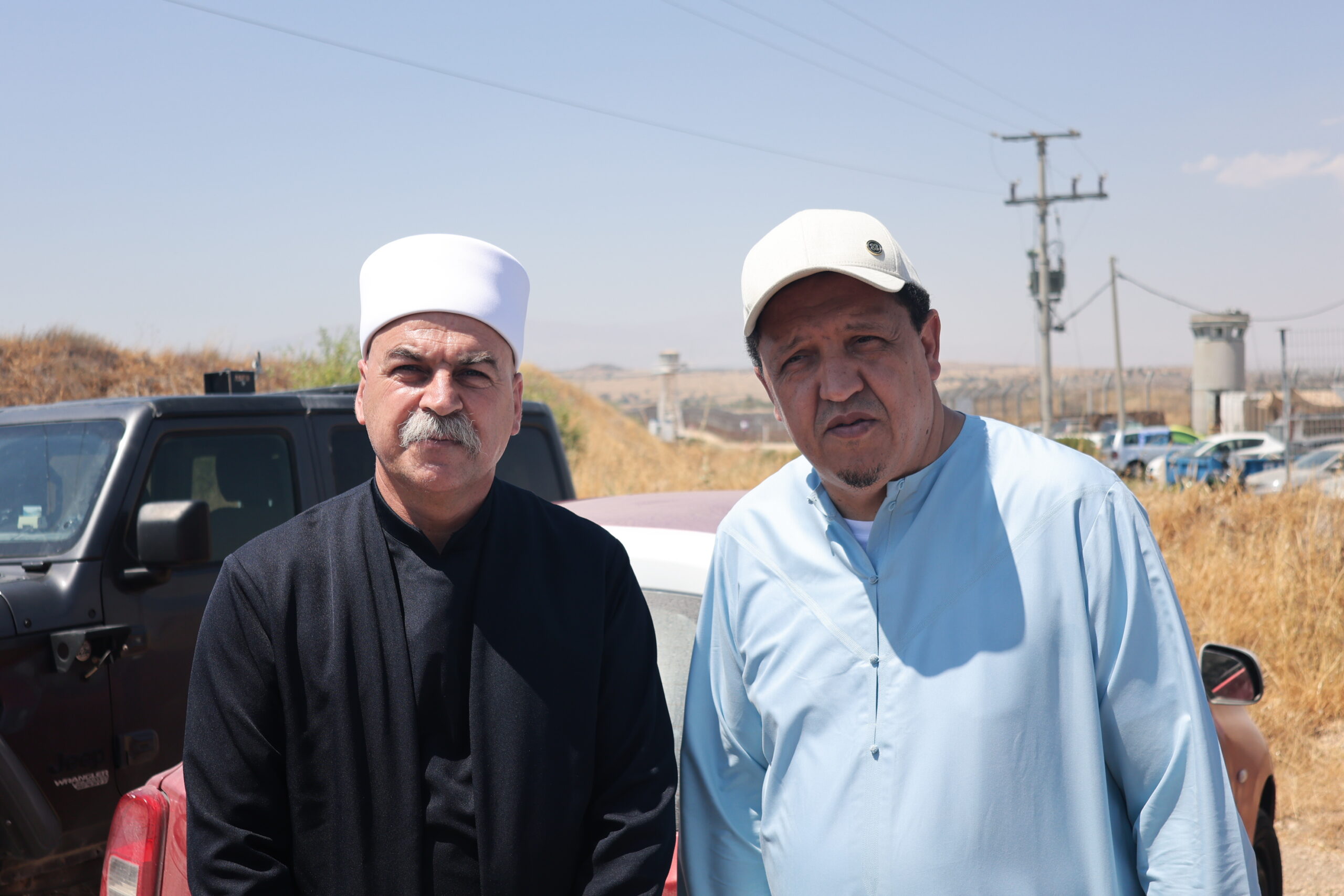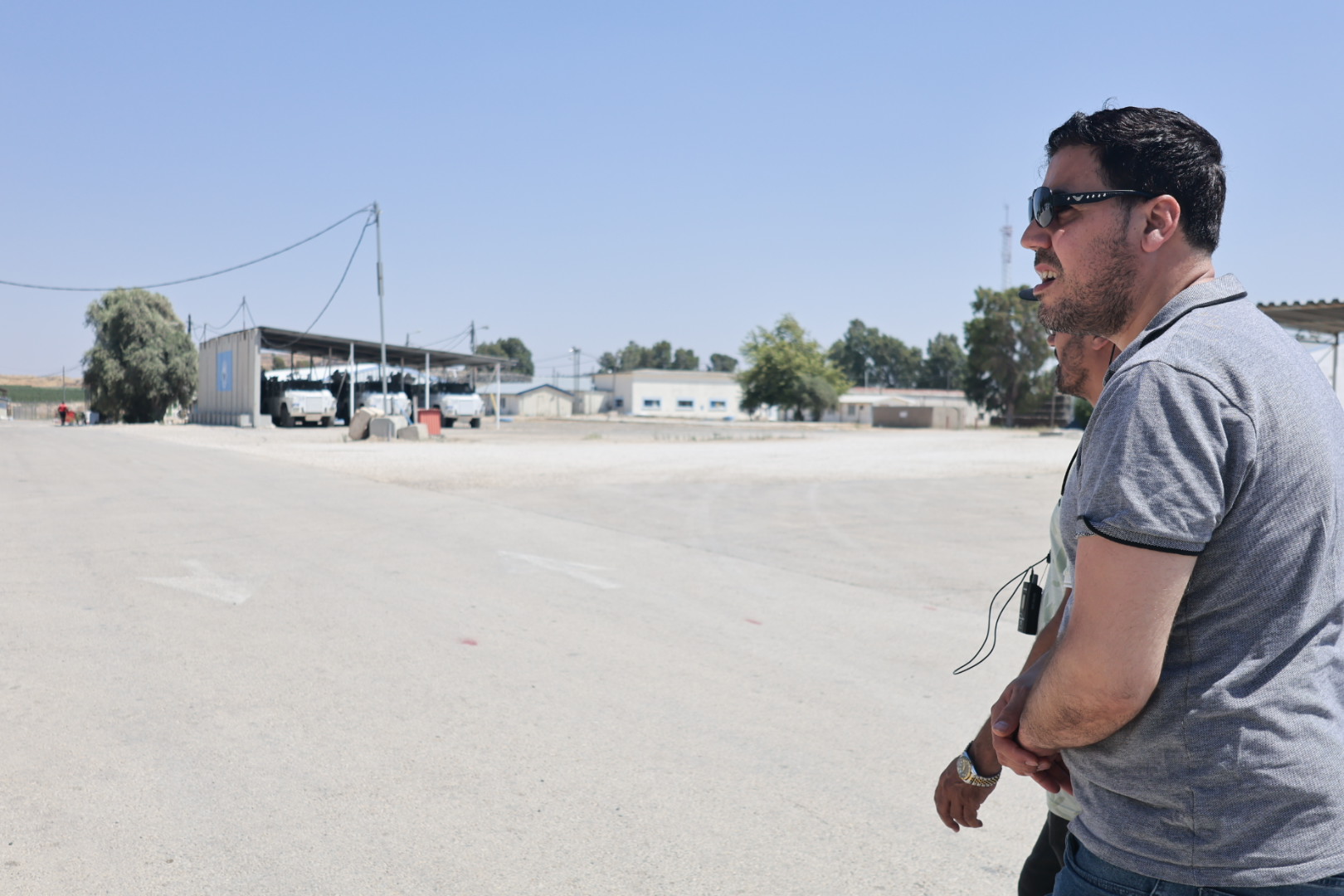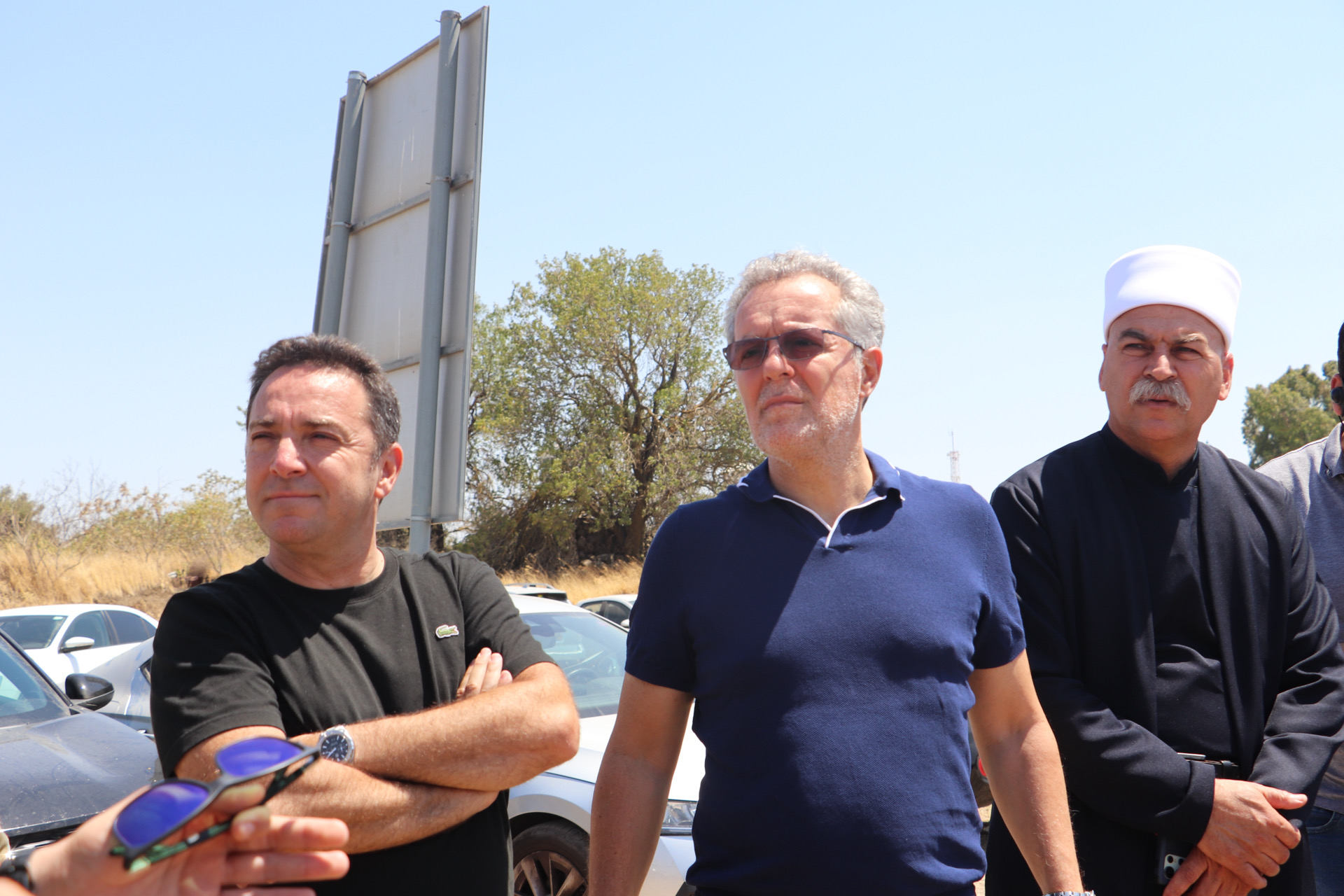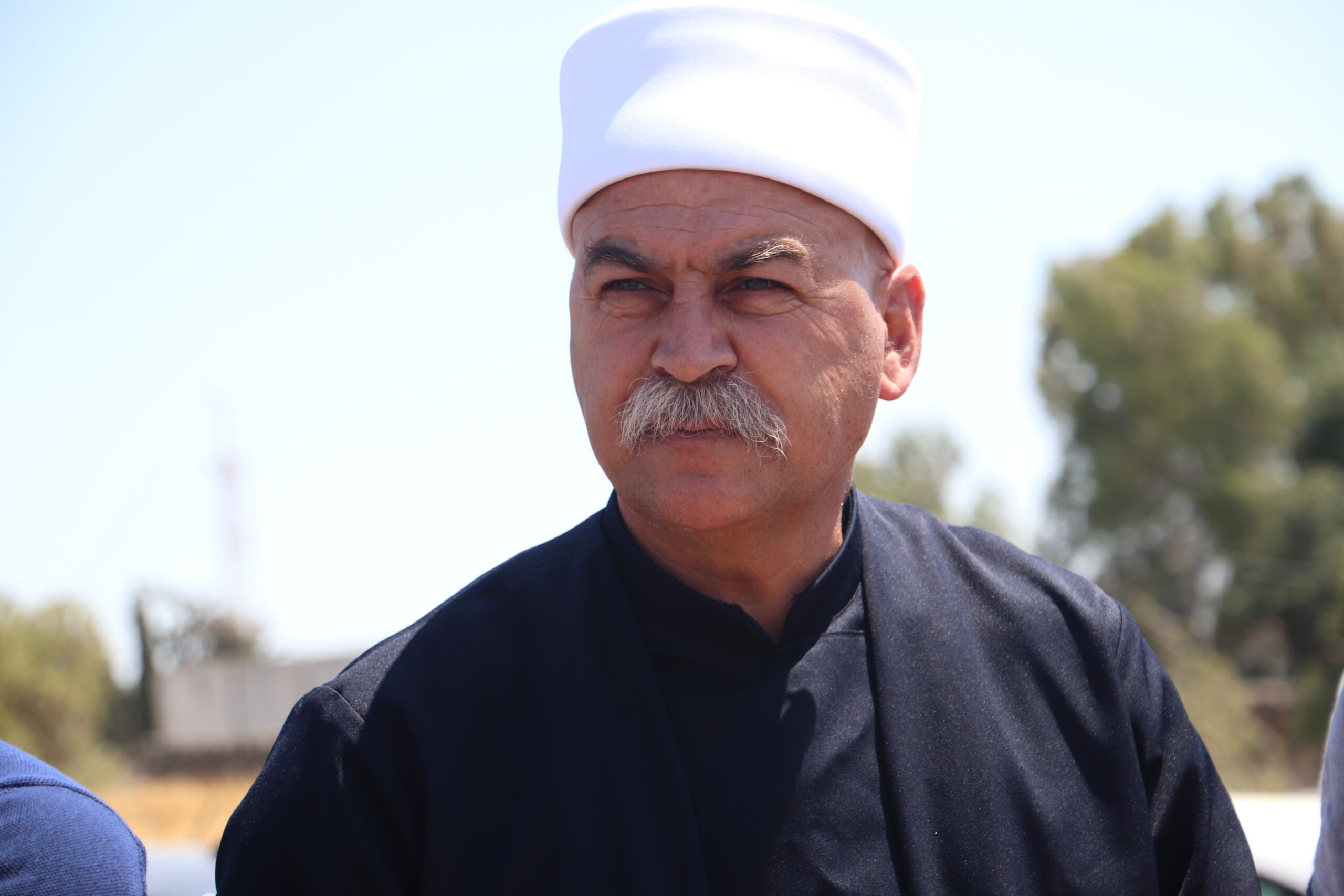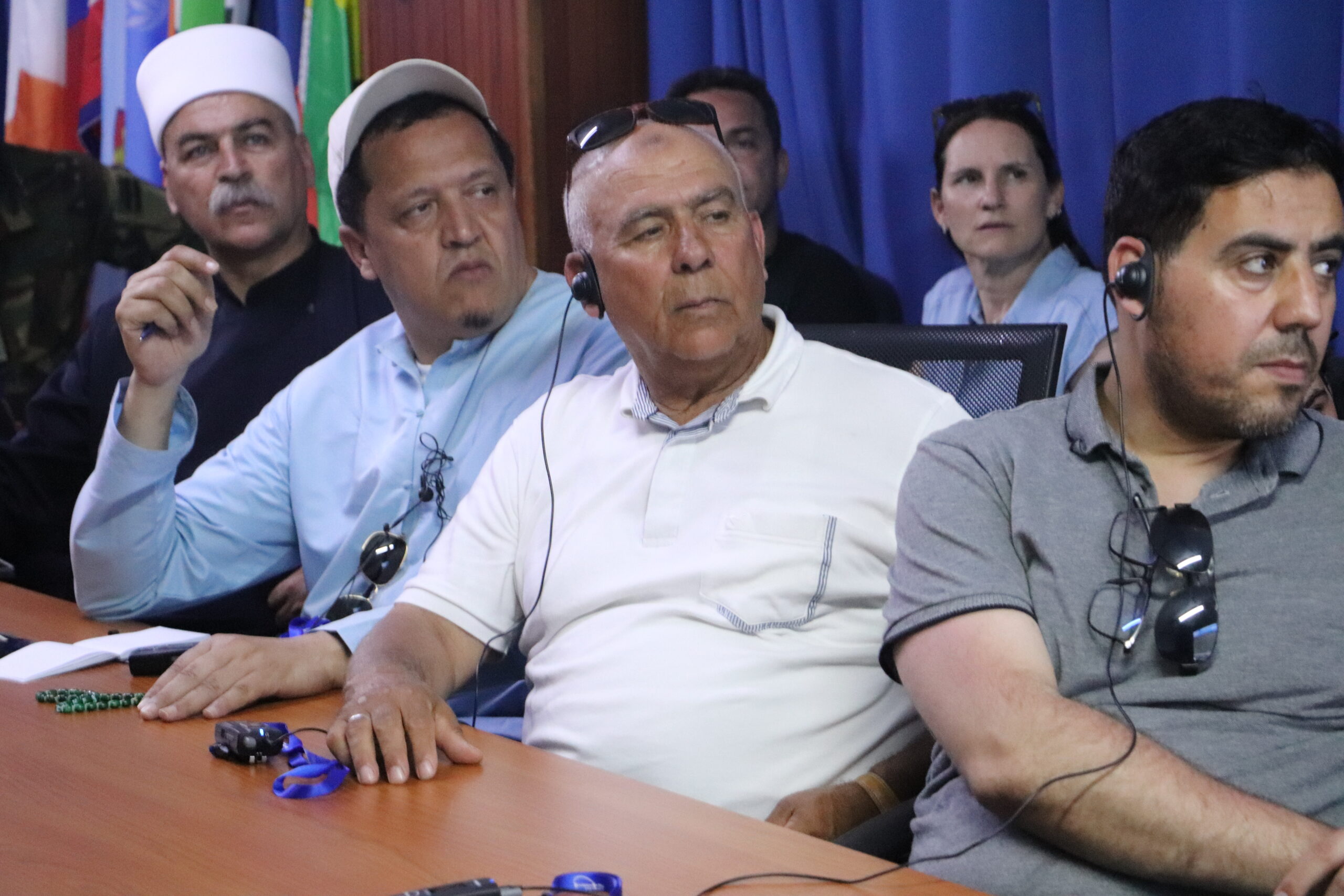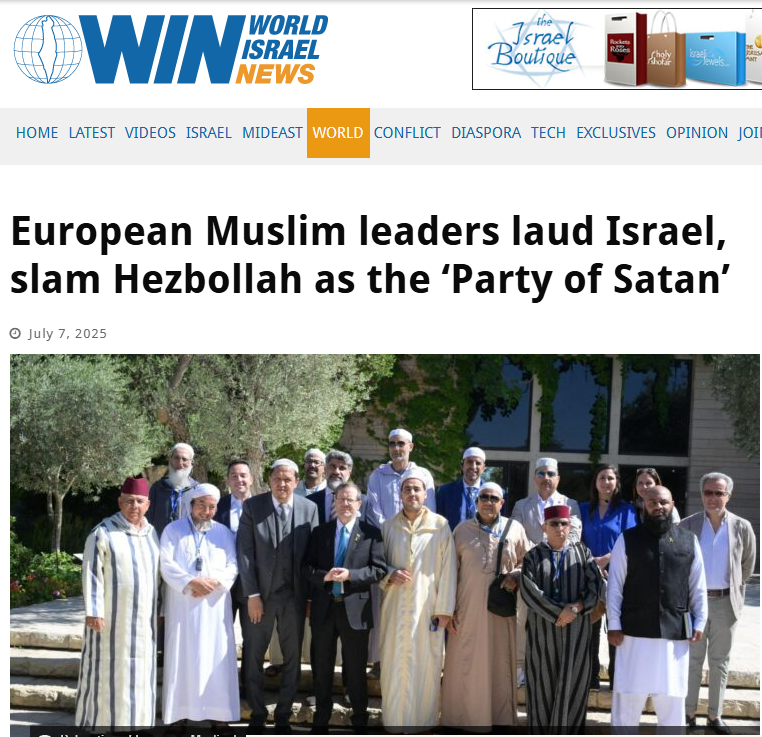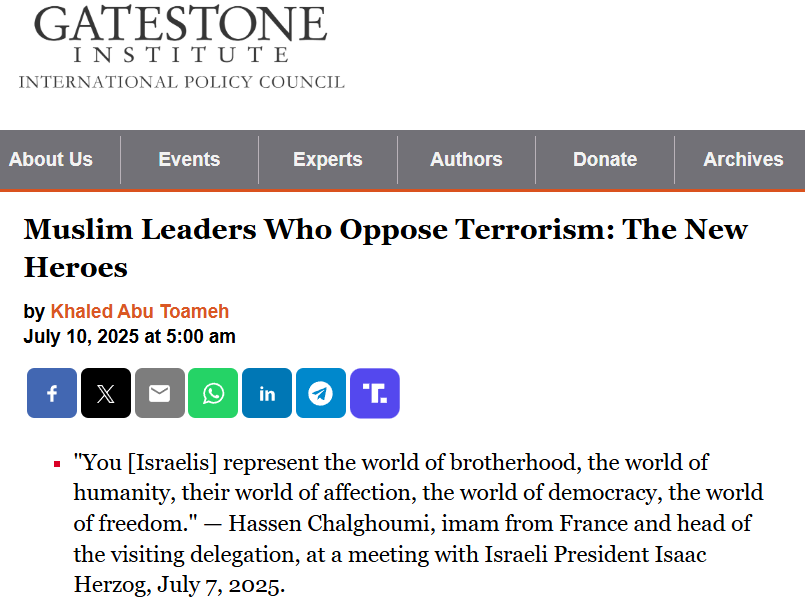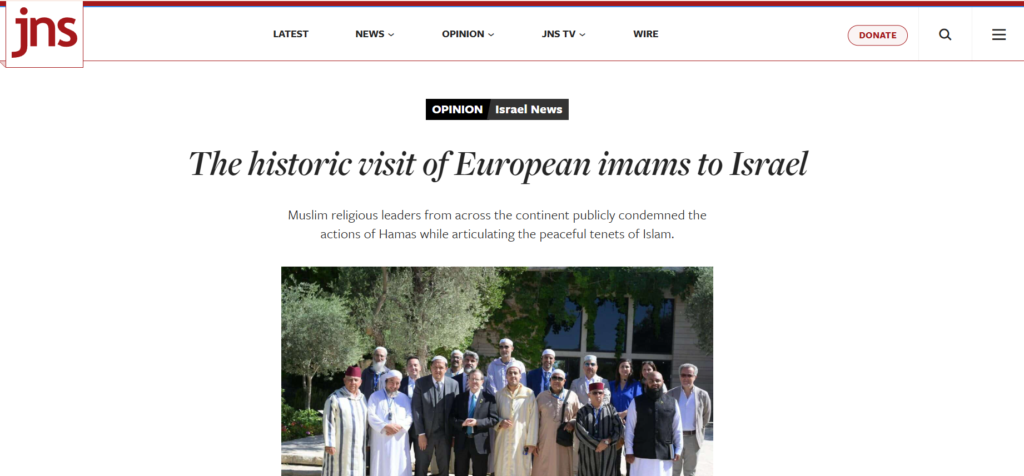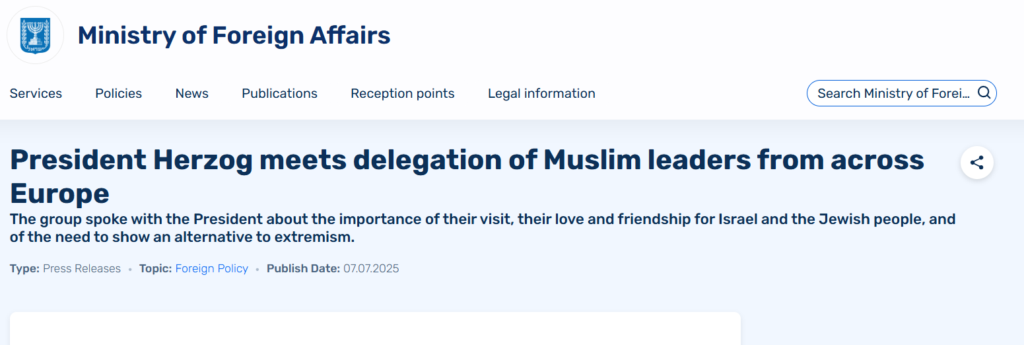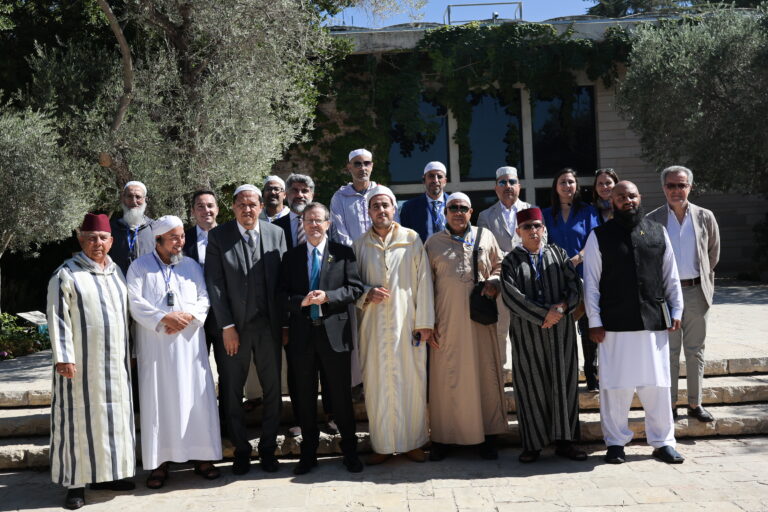
Making History
For the first time in its history, ELNET organized a delegation composed of 13 European imams from four different countries: France, the United Kingdom, the Netherlands, and Italy. This unprecedented mission was carried out in collaboration with Imam Hassen Chalghoumi, president of the Conference of Imams of France. In a particularly tense context, as Israel faces a war imposed since the terrorist attacks of October 7 perpetrated by Hamas, this initiative takes on major symbolic and diplomatic significance.
During this exceptional week, participants explored Israel’s social and political diversity, grasped the reality of Israeli democracy, observed coexistence between Jews and Arabs, while discovering the realities of a country in conflict. This mission is part of an interfaith dialogue approach and peace promotion, carried by courageous men of faith who chose to see beyond prejudices.
Day 1: Monday, July 7
This historic day opened with an audience with Israeli President Isaac Herzog. In an emotion-filled speech, the head of state expressed his gratitude to the imams for their courage and bravery. Despite the community pressures they faced, these religious leaders chose to travel to Israel to witness the reality on the ground, constituting what he called an immense sign of hope for all the Israeli people. Imam Chalghoumi responded with strong words:
"We come to transmit a message of peace. Members of this delegation take risks to promote harmony. Jews have endured terrible moments in their history and we respect their perseverance in seeking peace. This people constitutes the matrix of the world."
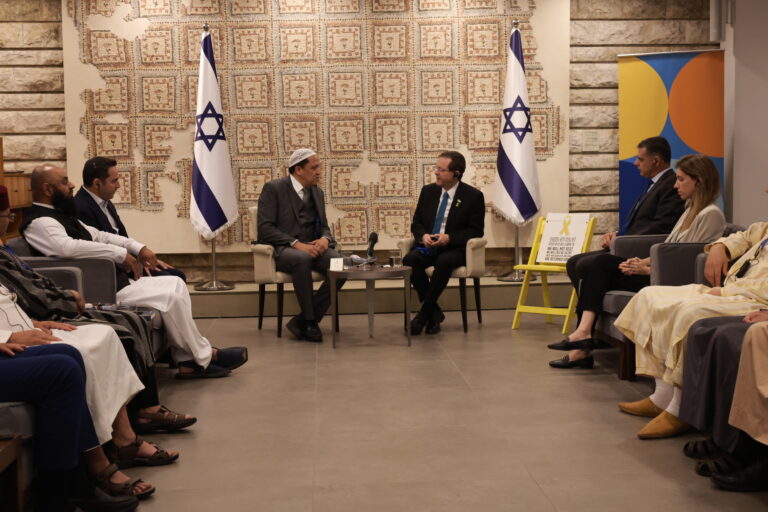
He also praised the progress made by certain Muslim countries that chose to normalize their relations with Israel, notably citing Morocco and Bahrain. This meeting concluded with songs of peace, notably a Hatikva performed in Arabic for the first time in the country’s history. This sequence symbolizing a desire for rapprochement between peoples went around the world and was seen by hundreds of thousands of people.
Discovering Israeli Democracy at the Knesset
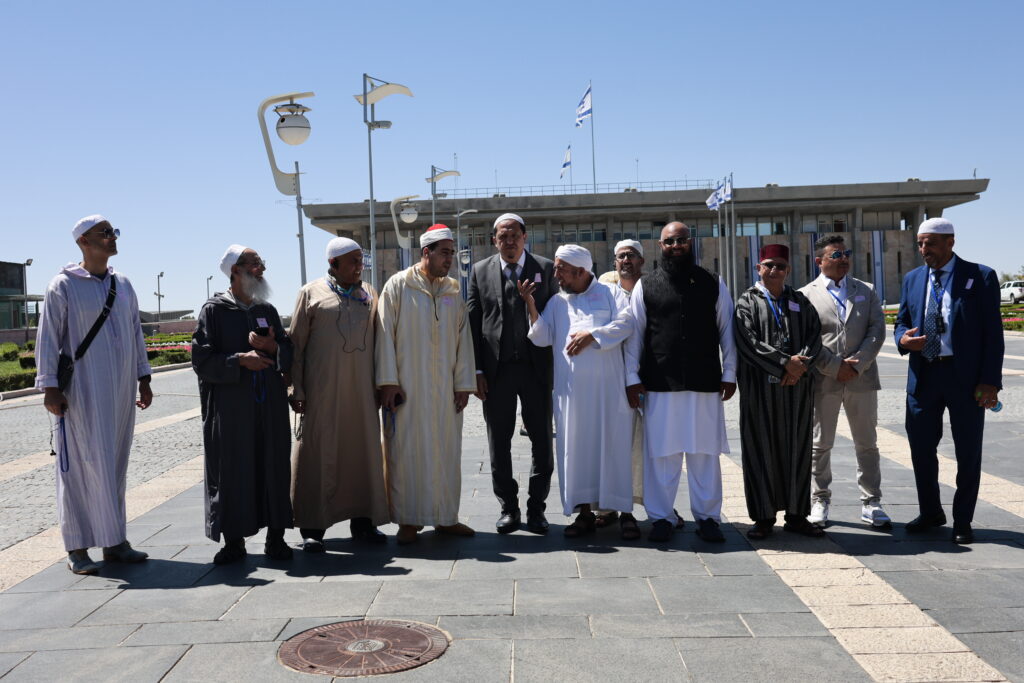
The morning continued with an in-depth exploration of the Knesset, Israel’s parliament, where the imams discovered the richness and complexity of the local democratic system. The presentation highlighted how the entire society finds its representation within this institution, notably with the presence of three Arab formations: a moderate Islamist party, a formation bringing together Jews and Arabs of communist inspiration, and an Arab nationalist movement. This political diversity illustrates Israel’s democratic vitality, alongside traditional formations like Likud on the right, center-left Yesh Atid of Yair Lapid, or the Labor Party.
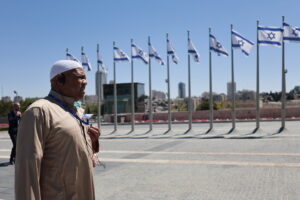
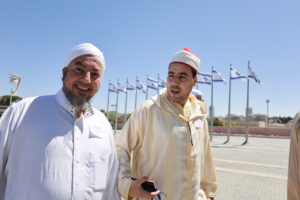
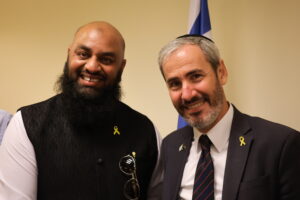
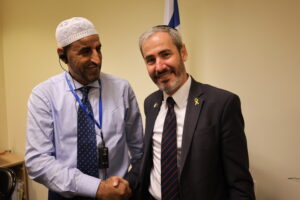
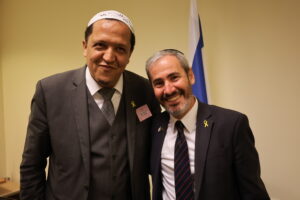
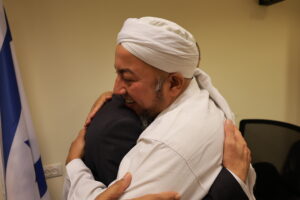
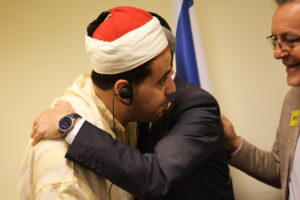
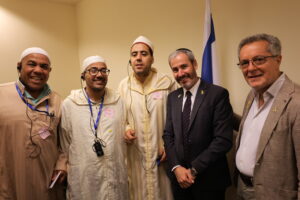
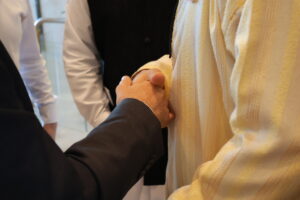
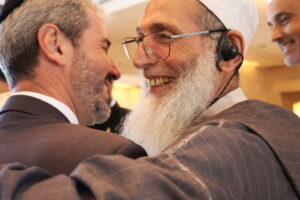
Meetings with several members of parliament deepened this understanding. Boaz Bismuth from Likud shared his personal experience, explaining how easy he found it to dialogue with men of faith and highlighting the similarities between Yom Kippur and Ramadan. However, he warned about the instrumentalization of religion by terrorists, reminding that normalcy and peace promotion require courage. The testimony of Noor Dahri, who lost his brothers and father because of his positions in favor of peace, illustrates the personal sacrifices some make for their convictions
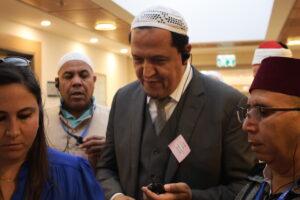
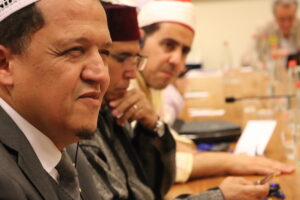
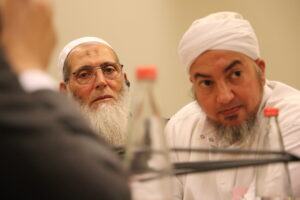
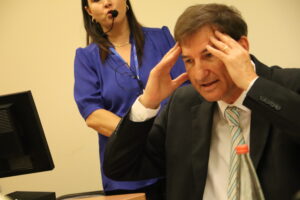
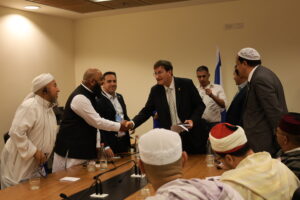
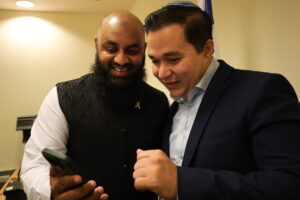
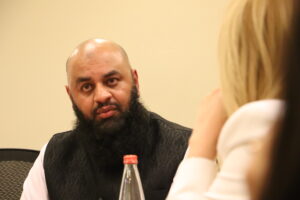
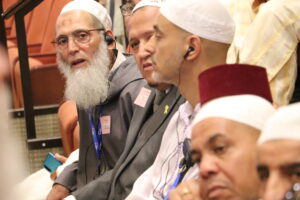
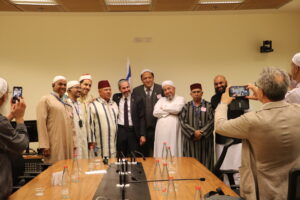
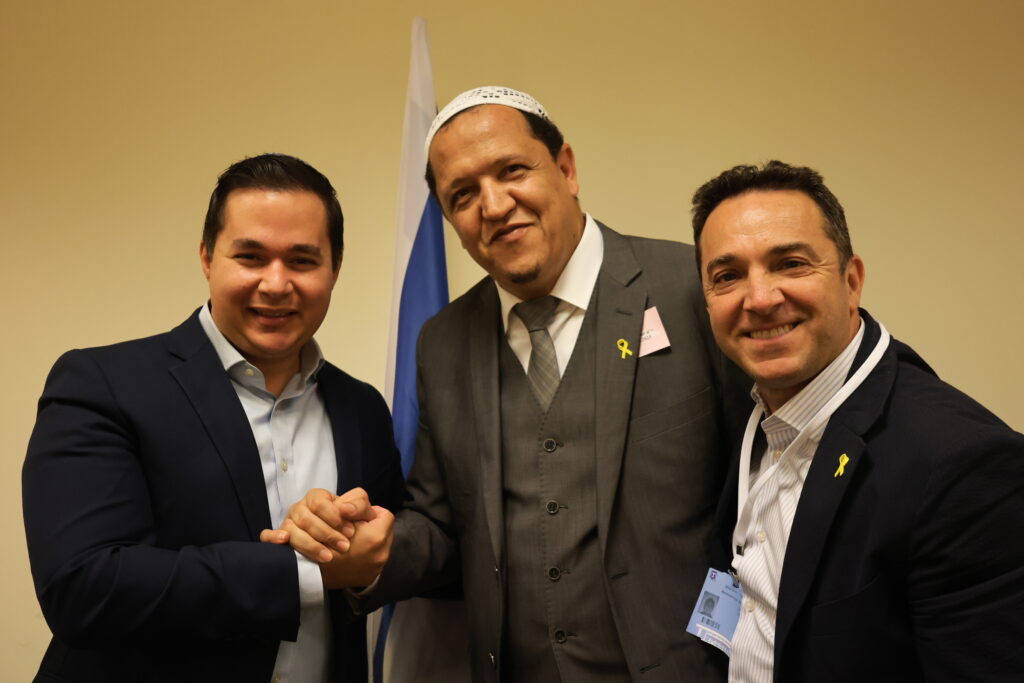
Dan Illouz, also a Likud member, born in Canada and of Moroccan origin, emphasized that Jews and Muslims do not constitute natural enemies. On the contrary, common values and cultures exist, on which we should focus to build a shared future.
From the opposition side, Shelly Tal Meron, member of the Causcus for hostages and Yesh Atid party, expressed the desire to end the conflict and bring back the hostages, emphasizing that Israelis aspire to live in peace.
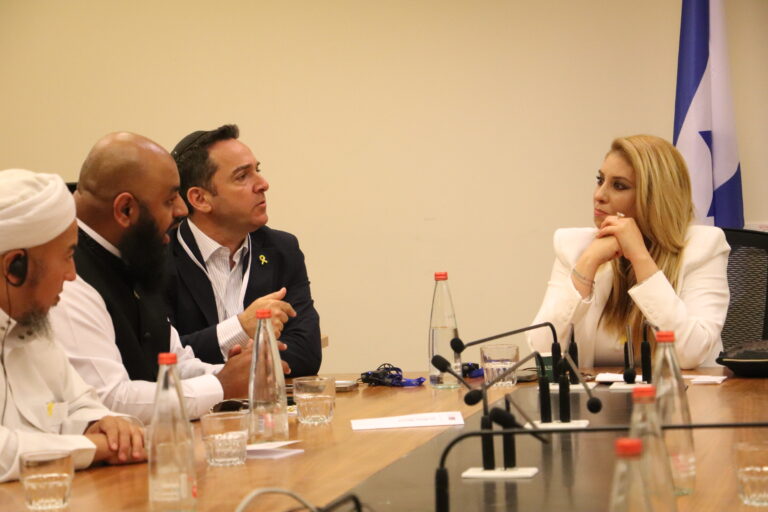
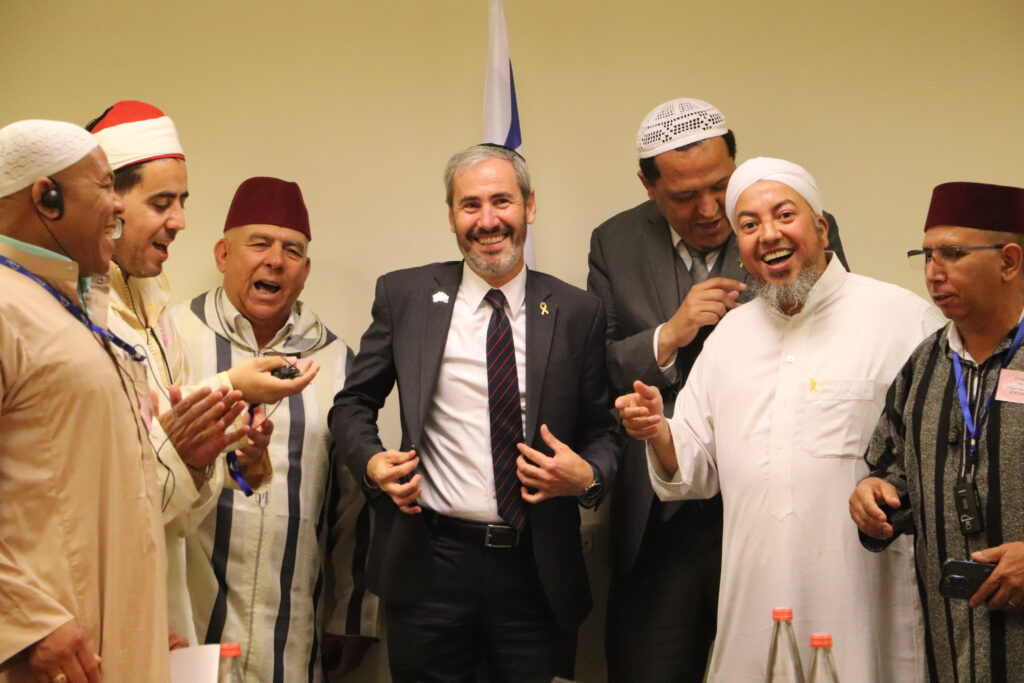
Yossi Taieb, member of Shas, mentioned the opportunity to expand the Abraham Accords to Syrians or Saudi Arabia, recalling that Jews have always known how to coexist with Muslims and Catholics.
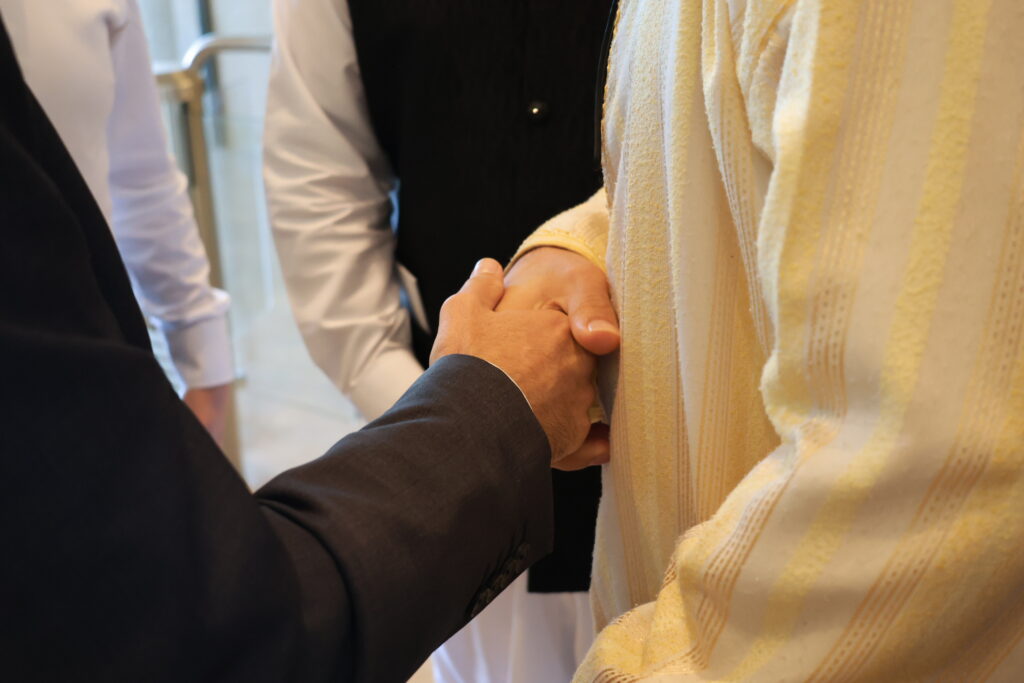
Demographic Complexity and Special Status
The parliamentary visit also allowed understanding of Israeli demographic complexity. The guides explained that any citizen can attend parliamentary debates, illustrating the democratic openness of the system.
The existence of school textbooks in Arabic for Israeli Arabs demonstrates the consideration of the country’s linguistic diversity.
Participants learned that 2 million Israeli Arabs live in the country, of which 5% are Christians, without obligation to perform military service. In contrast, Israeli Bedouins perform it obligatorily, as do the Druze who, although Arab, are not Muslim.
Jerusalem, Shared Holy City
The afternoon was devoted to a moving discovery of the Old City of Jerusalem. The visit to the Temple Mount for the imams was an opportunity for Noor Dahri to display the yellow ribbon in front of Al-Aqsa Mosque to show his support for hostages in every circumstances. The photo of this act of bravery was seen more than one million times on X.
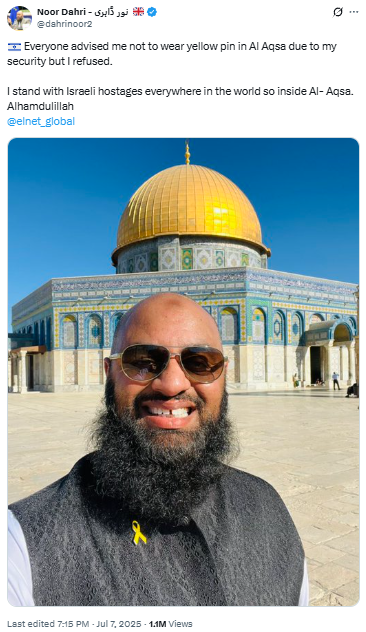
This day in the holy places embodied the spirit of religious coexistence that the delegation wished to promote.
The evening ended with a dinner-debate with Khaled Abu Toameh, a Palestinian journalist respected for his independent work and nuanced analyses of the Middle Eastern conflict. His observations on the situation in the Middle East and Israel provided valuable insight to participants, enriching their understanding of regional issues.
Day 2: Tuesday, July 8 - Memory and Security Realities
The Duty of Memory at Yad Vashem
This day began with a particularly moving guided visit to Yad Vashem, the Holocaust memorial. The imams traveled through the tragic history of the persecution of European Jews, from the turning point of 1938 with Kristallnacht, then the invasion of Poland in 1939. The historical journey continued with the invasion of France in 1940, divided between the north under German control and the south under the Vichy regime.
Participants discovered the horror of the “death routes” and the Einsatzgruppen that caused 1.5 million victims in Ukraine and Romania. The macabre figures of Treblinka (870,000 deaths in one year), Bełżec (500,000 deaths in less than one year), and Sobibor (220,000 in just over one year) deeply marked the audience.
This visit concluded with a ceremony in the crypt of remembrance, a moment of solemn contemplation in the presence of journalists who came to interview the imams upon their exit
Institutional Meetings and Security Briefings
In the afternoon, the delegation met with two ministers: Michael Malchieli, Minister of Religious Affairs, to discuss issues of religious coexistence and contemporary challenges, and Moshe Arbel, Minister of the Interior. These two meetings were once again concluded with the Hatikva in Arabic, despite community pressures and threats suffered by the imams.
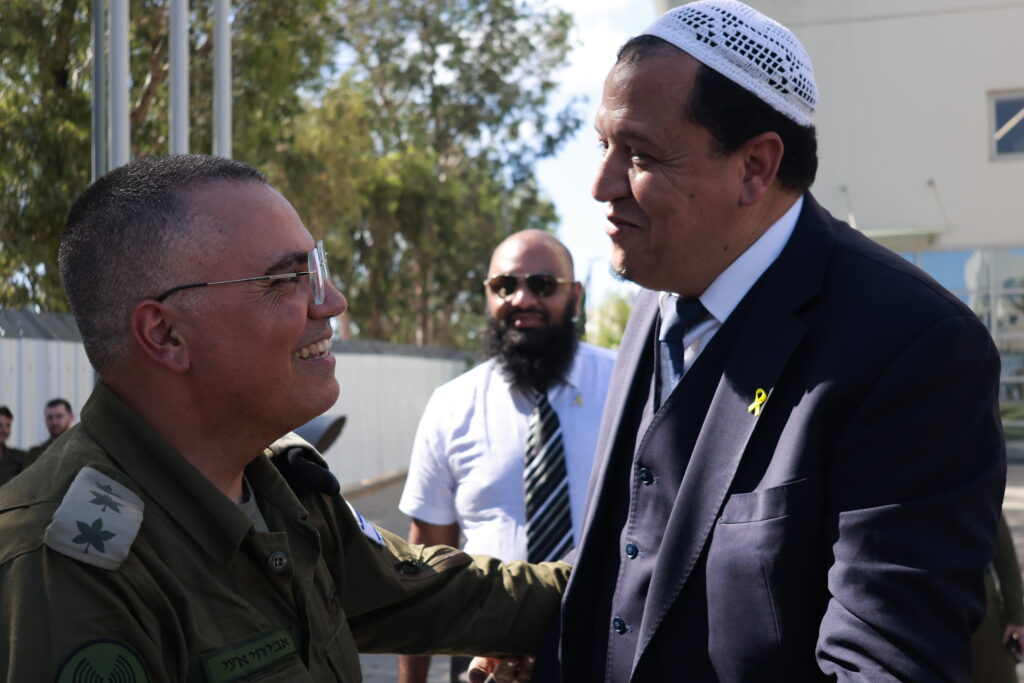
An IDF officer specializing in Iranian issues reviewed Iran’s hostility toward Israel, the Iranian revolution, and the establishment of Hezbollah. Iran’s implications after October 7 were detailed, as well as the results of Israeli operations against the Iranian nuclear program. Although these operations have slowed the Iranian program, the exact extent of this delay remains uncertain. Israeli forces sent warning messages to the entire population before their offensive against Iran.
The day continued with a visit to a destruction site in Ramat Gan, hit by an Iranian missile. The imams were able to directly observe the impacts and damage caused, receiving information on the management of residents in these areas and their potential reintegration into various housing damaged by the missile.
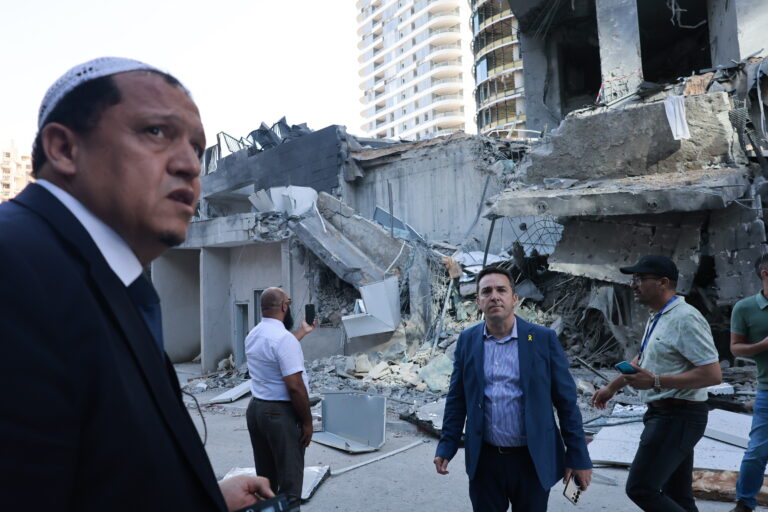
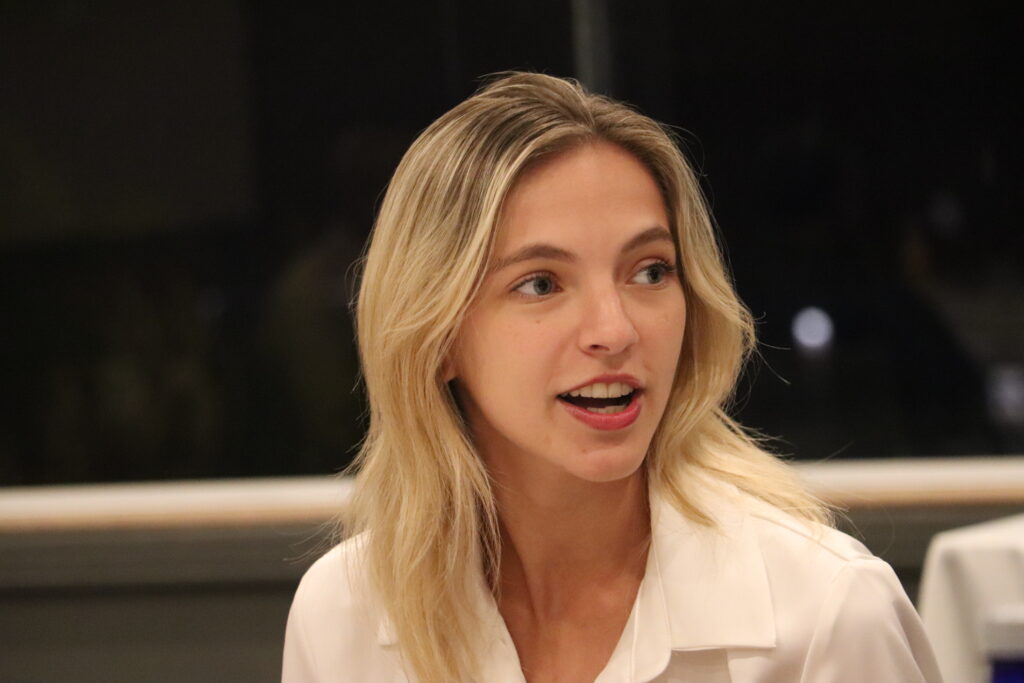
The evening was marked by a heartbreaking testimony from Rafaela Treistman, a Nova festival survivor. This Brazilian immigrant of Jewish origin recounted the horror she experienced, hidden in a shelter for nearly 5 hours, waiting for the terrorists to leave. That day, she lost her companion but committed to staying strong, keeping her smile, and honoring the memory of victims by testifying as much as possible.
Day 3: Wednesday, July 9 - Facing Horror and Solidarity
This morning began with one of the most difficult ordeals of the trip: viewing the documentary film about the October 7 massacre at IDF Spokesperson Unit’s headquarters. These atrocities committed in the name of Allah were particularly trying for the imams who heard their God’s name profaned by terrorists.
Humanitarian Aid to Gaza
The delegation then traveled to Kerem Shalom, a base normally closed to the public located on the Gaza border where all humanitarian aid destined for Gaza transits and is controlled. The imams then received an exclusive briefing by Brigadier Ben Elad Goren, responsible for civilian humanitarian efforts in Gaza within COGAT (Coordinator of Government Activities in the Territories), on the delivery of humanitarian aid.
They were able to directly examine GHF (Israeli-American organization) boxes and their contents. The IDF presented their assistance program to the UN to distribute aid without it being diverted by Hamas, illustrating efforts deployed despite difficult conditions and the disinformation circulating on this subject
Meeting with Bedouins
The delegation then met with the Bedouin reconnaissance battalion, an exchange that took place in Arabic. Participants discovered Bedouin culture and the role of this military base in Israel’s security, demonstrating the integration of these communities into the national defense effort.
They were able to directly examine GHF (Israeli-American organization) boxes and their contents. The IDF presented their assistance program to the UN to distribute aid without it being diverted by Hamas, illustrating efforts deployed despite difficult conditions and the disinformation circulating on this subject.
On the Trail of the Nova Massacre
In the afternoon, the imams went to the Nova festival site, scene of a massacre on October 7. They were able to directly observe the place where several hundred people were killed or kidnapped. The press was present to gather their testimonies, allowing the imams to express their emotion in the face of this tragedy.
Kfar Aza: When Hope for Peace Breaks
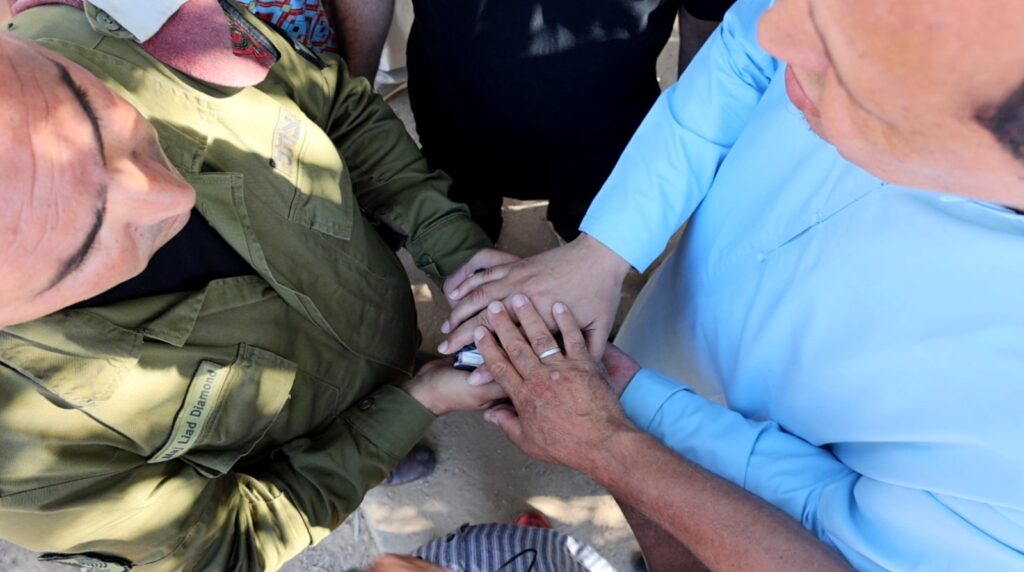
The visit to Kibbutz Kfar Aza was a particularly overwhelming moment. “Kfar Aza” means “facing Gaza”: this kibbutz located 800 meters from Gaza was heavily hit on October 7, with 64 people killed and 19 kidnapped. The inhabitants of this village deeply believed in possible peace with Gazans and worked daily toward this goal.
The part most affected by the attacks was that of the young people, where the new generation supposed to compose the village’s future resided. During this visit, the imams met with the mother of one of the victims, a particularly moving exchange that illustrated the human cost of the conflict and ended with a prayer for the victims.
Bedouin Family Testimony
The day continued with a meeting with a Bedouin family whose member, Farhan Al-Qadi, had been held hostage in Gaza for 326 days. They related to the imams the ordeal of being taken hostage and their experience, demonstrating that violence affects all communities without distinction.
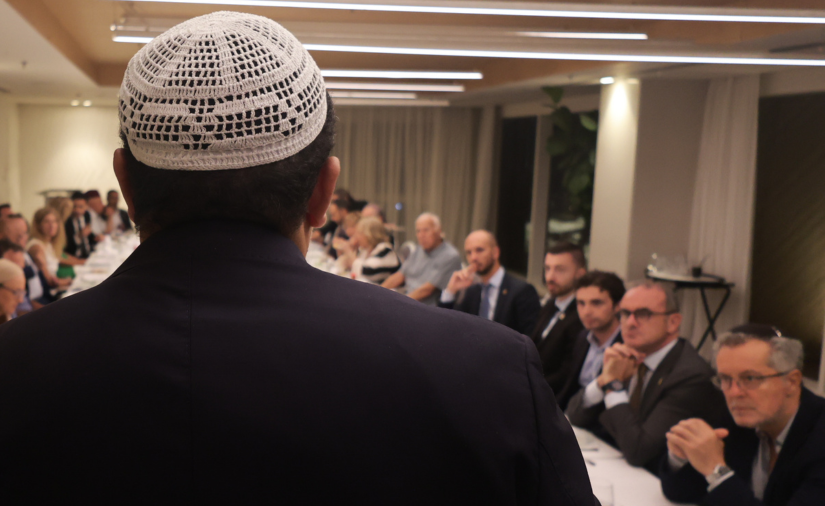
The evening ended with a dinner with ambassadors and ELNET board members, in the presence of representatives from France, Belgium, and the Netherlands in Israel, allowing for high-level diplomatic exchange on regional issues
Tragedy at Majdal Shams
Accompanied by an Israeli Druze sheikh, the delegation headed to Majdal Shams, near the Lebanese and Syrian borders, to meet the Druze community. The visit to the soccer field hit by a Hezbollah missile on July 27, 2024, which killed 12 children, was a moment of intense emotion. The imams met with one of the mothers who was bereaved that day, a poignant testimony to the reality of war that strikes the innocent. Discussions and common prayers marked this moment of contemplation, followed by a traditional lunch in the Druze village.
Briefing at the Syrian Border
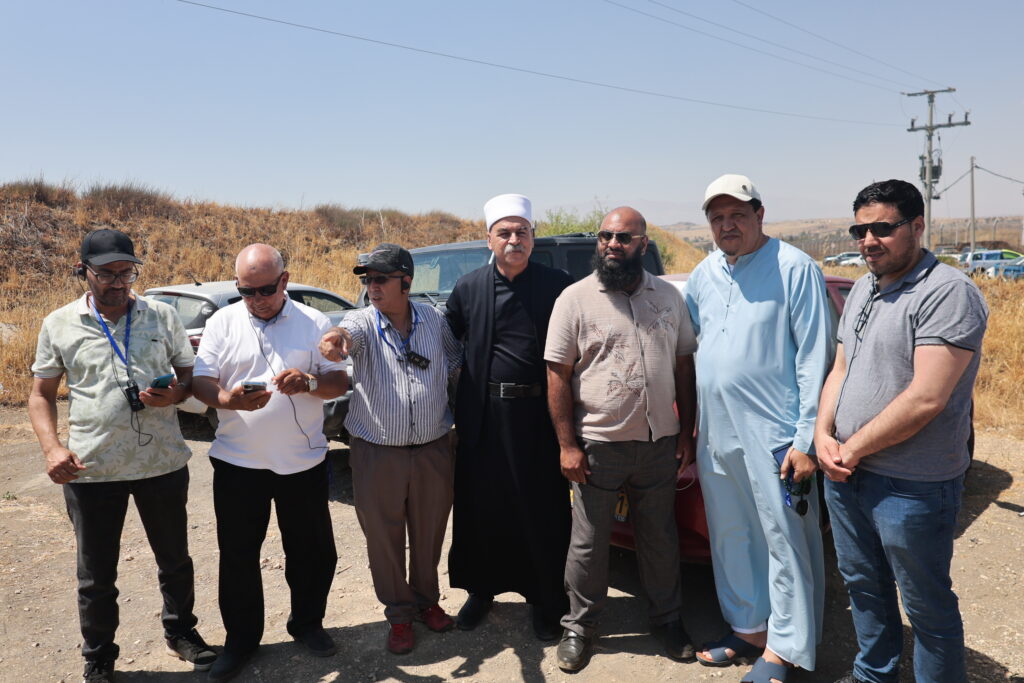
In the afternoon, near Quneitra, the imams received a detailed briefing on the situation at the Syrian border. Quneitra constitutes a preventive zone established by Israel with a reinforced border, whose objective is to prevent an event similar to October 7 from recurring from Syria.
An IDF representative explained the ground situation to participants. He specified that since the average income is very low in the buffer zone, Israelis decided to establish contact with local communities to prevent them from being corrupted by terrorists. They notably created hospitals to gain the trust of these communities and demonstrate that Israelis do not constitute their enemies.
Israeli forces do not establish themselves in cities to avoid imposing their presence; they wish to establish friendly relations. The UN must be present to arbitrate the zone. Not knowing what is happening on the other side, they are forced to be preventive. The objective is not to conquer but to secure and create a relationship of trust. They will remain in place until ensuring that the post-Assad regime is not hostile to Israel. The delegation learned that Erdogan is preparing a new army and that Syrians are surprised by the links they are building with Israelis.
The Role of the UN
The briefing at the UN base at Camp Ziouani explained the role of UNDOF (United Nations Disengagement Observer Force). Established in May 1974 by Security Council Resolution 350 following the Israeli-Syrian disengagement agreement in the Golan, it continues today to monitor the implementation of the agreement in the region and compliance with the ceasefire
Shared Pain
The day continued with a meeting with the Khatib family, a Muslim family bereaved by an Iranian missile on June 14, 2025. The imams were received by the grandfather who lost his two daughters-in-law and two grandchildren. This meeting allowed participants to see on the ground that Hamas or Hezbollah terrorists also cause enormous suffering to Muslim families. They then prayed in the village mosque in Tamra.
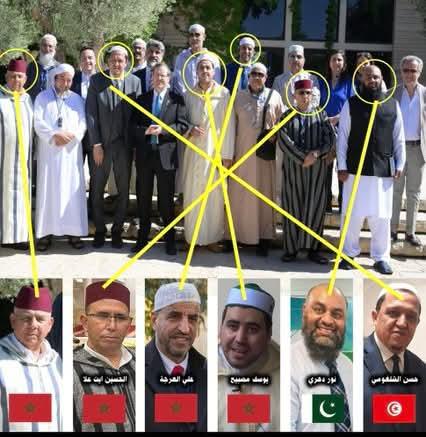
Akko and the Al-Azhar Controversy
The visit to Akko (Acre) offered a moment of respite with prayer at the El Jazzar mosque and dinner in this historic city before returning to Tel Aviv. On the way back, a significant event occurred: the Al-Azhar Institute published a statement criticizing the imams who participated in this delegation. This statement, which resembles a form of fatwa, states that “this misguided group does not represent Islam, Muslims, or the true mission of scholars, preachers, and imams who support the oppressed. Al-Azhar warns Muslims in the East and West against these hypocrites and others who seek favors at the tables of disgrace, shame, and humiliation, even if they practice Islamic rituals or claim to be imams and religious figures.”
Conclusion: A Message of Peace Despite Obstacles
This historic delegation of European imams to Israel is part of a courageous approach to interfaith dialogue and peace promotion. Despite pressures and criticism, these men of faith chose to observe ground reality, meet victims of all faiths, and witness the complexity of a situation that transcends religious divisions.
Through meetings with political leaders, survivor testimonies, visits to holy places, and discovery of security realities, the imams were able to observe the diversity of Israeli society, efforts deployed to minimize civilian casualties, and the desire for coexistence that animates many citizens.
This mission illustrates the importance of direct dialogue and confronting ground realities to overcome prejudices and build bridges between communities. It testifies to the existence of moderate and courageous voices that refuse the fatality of conflict and work for a future of peace and coexistence in the region.
